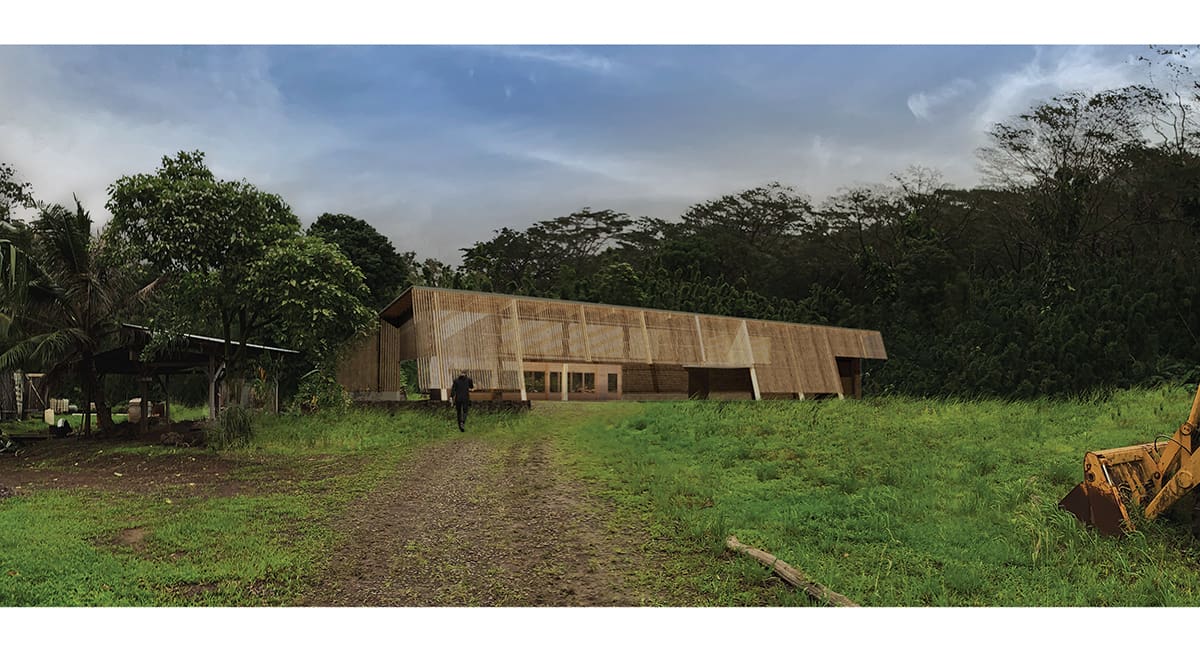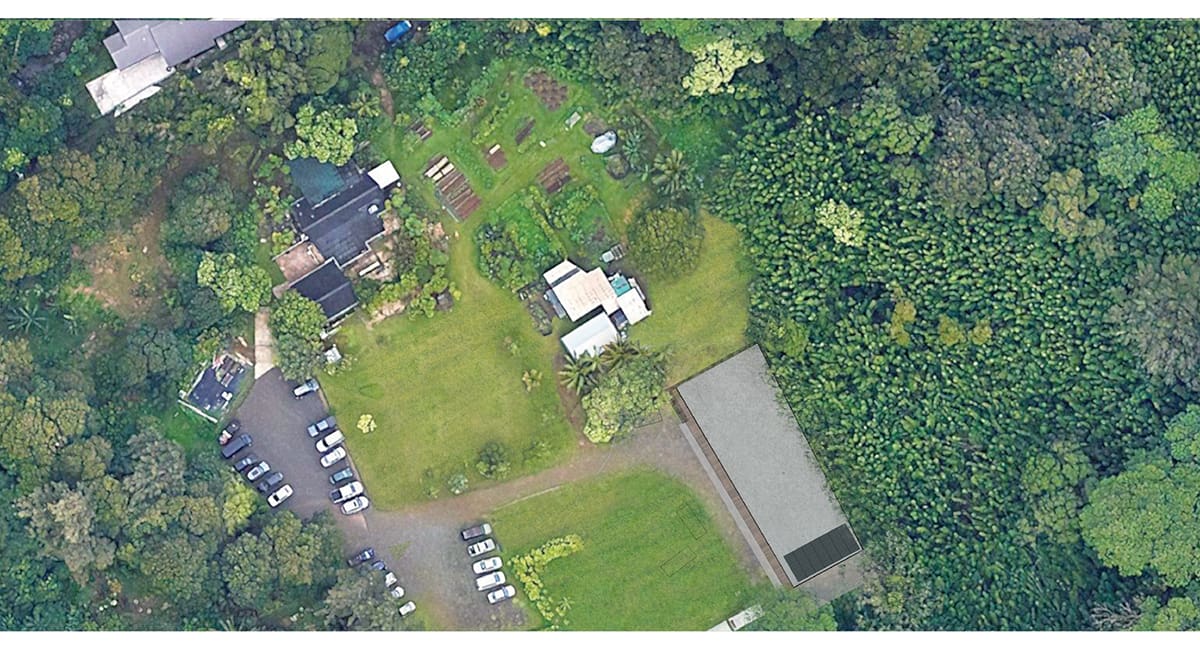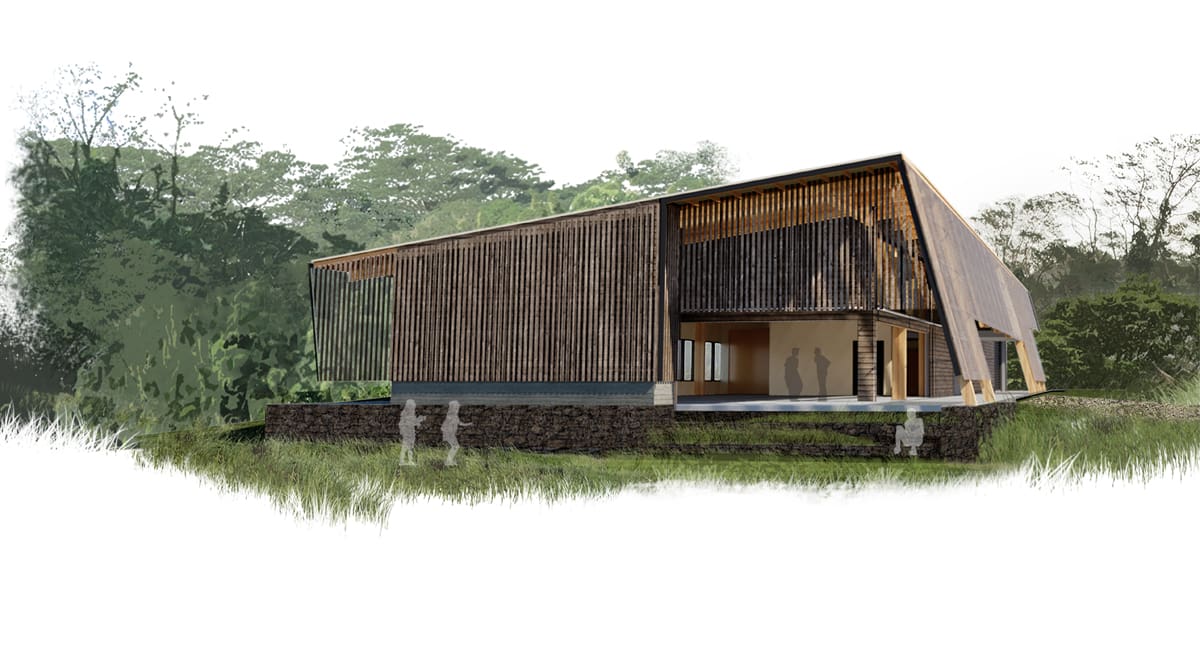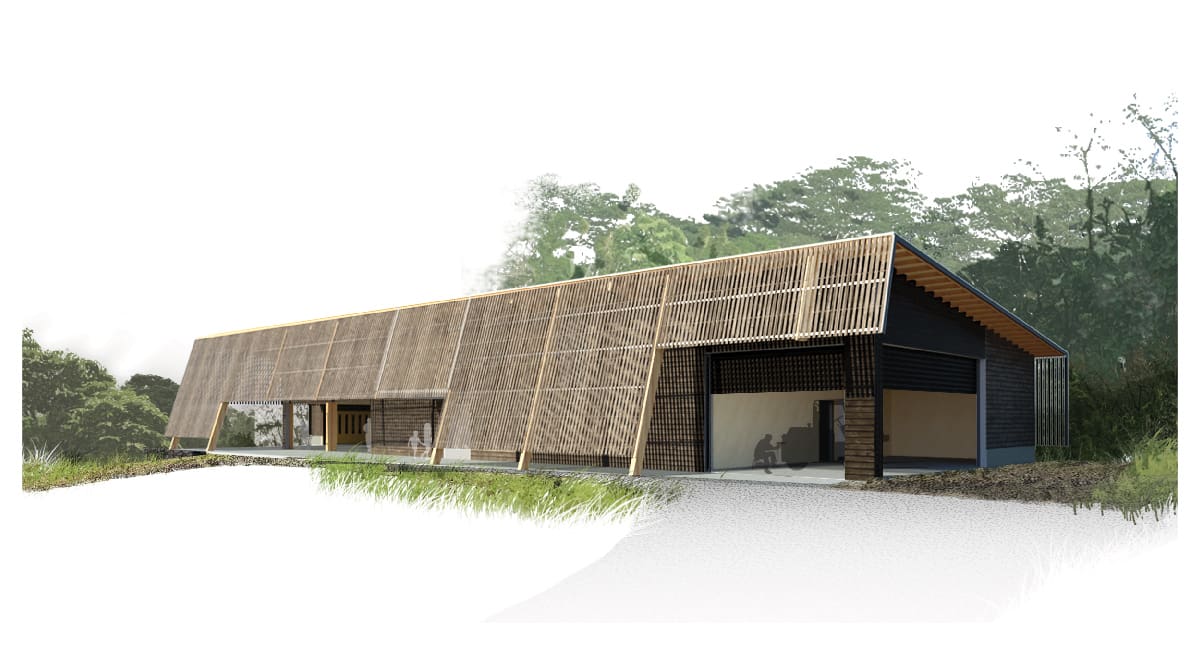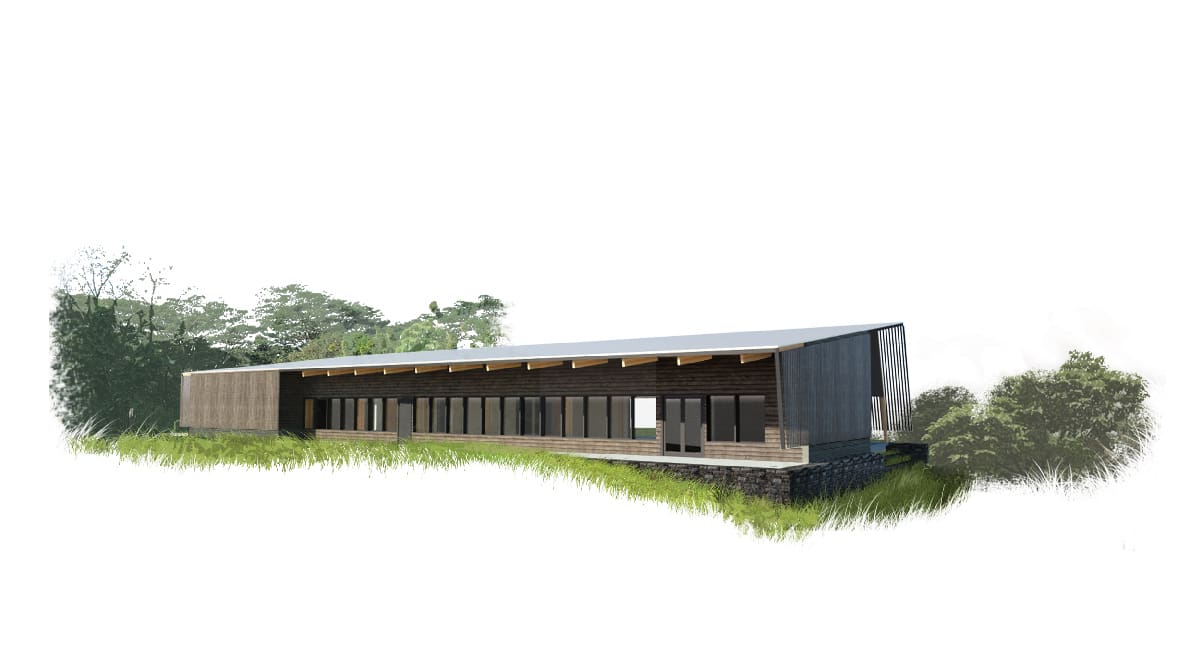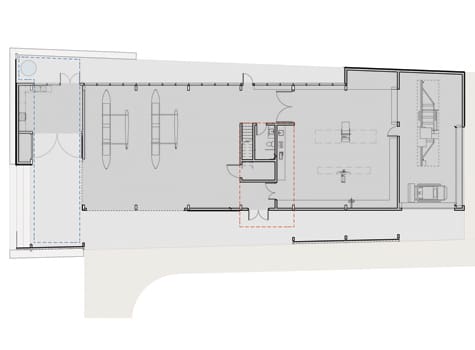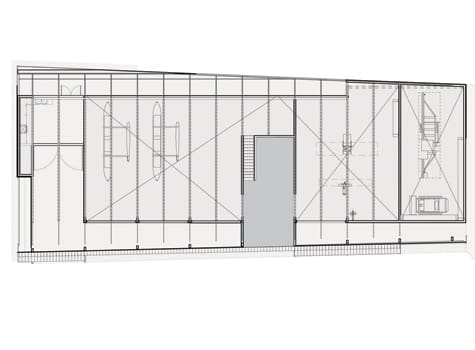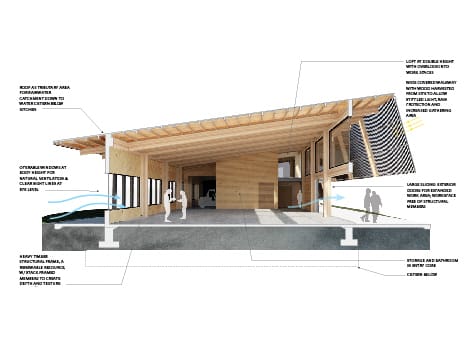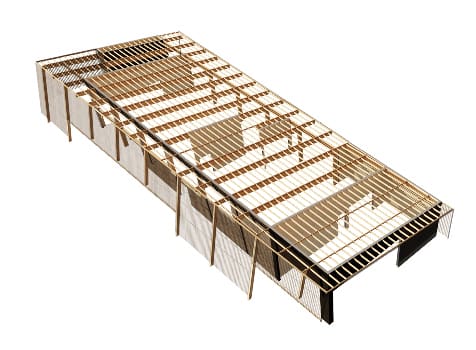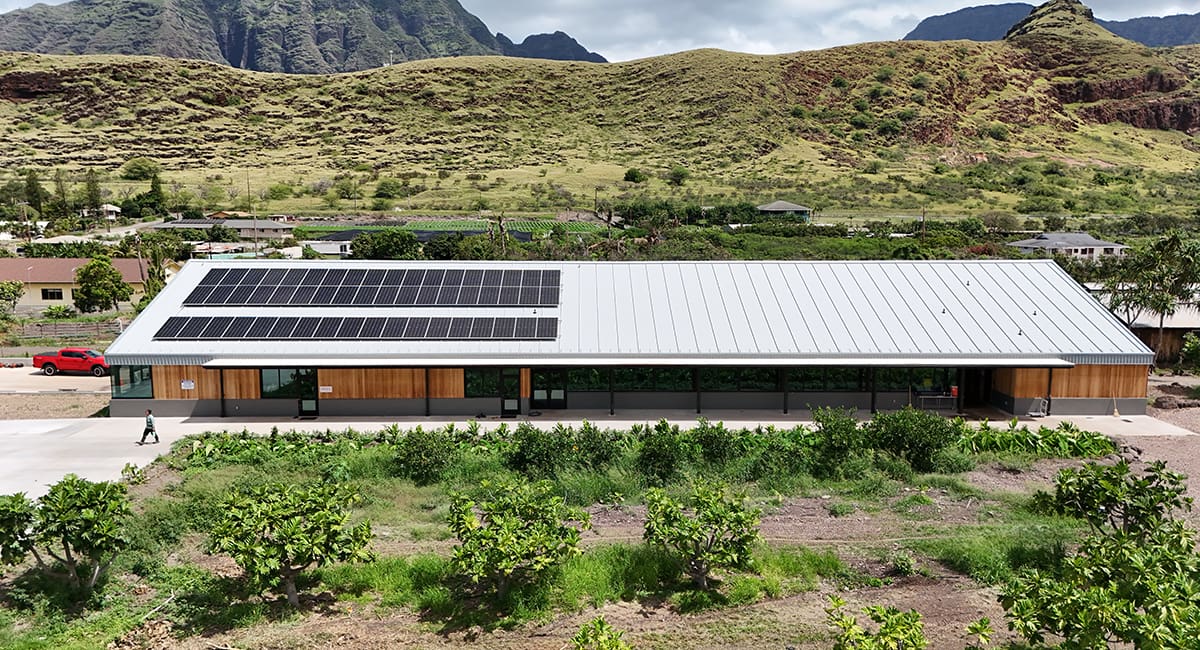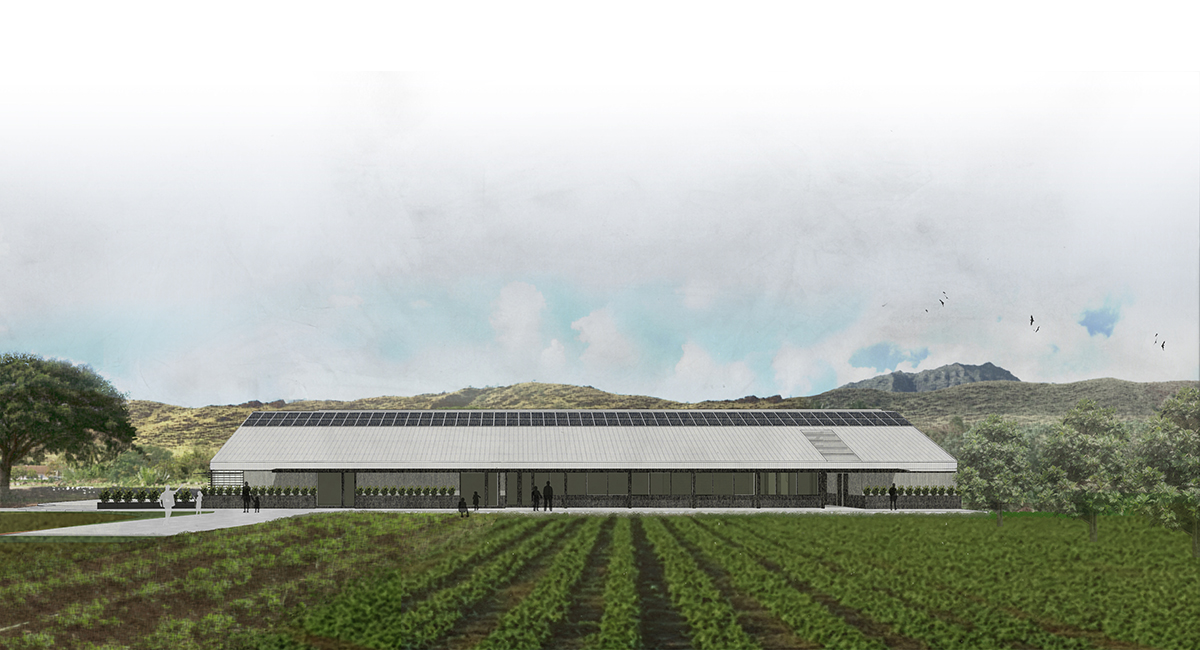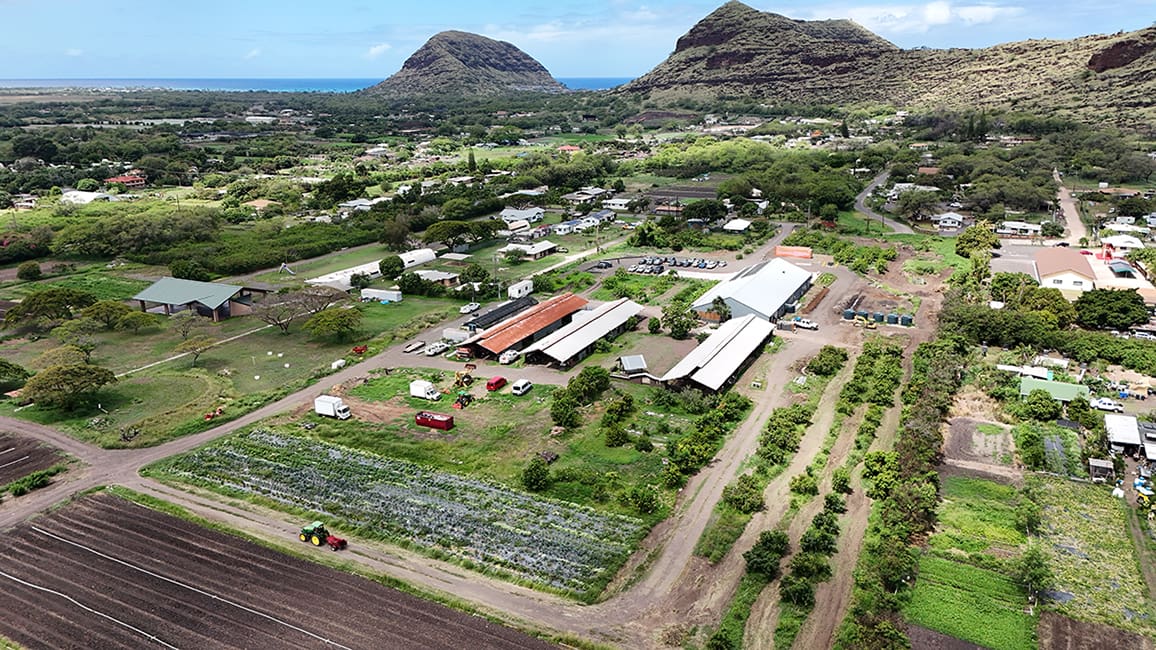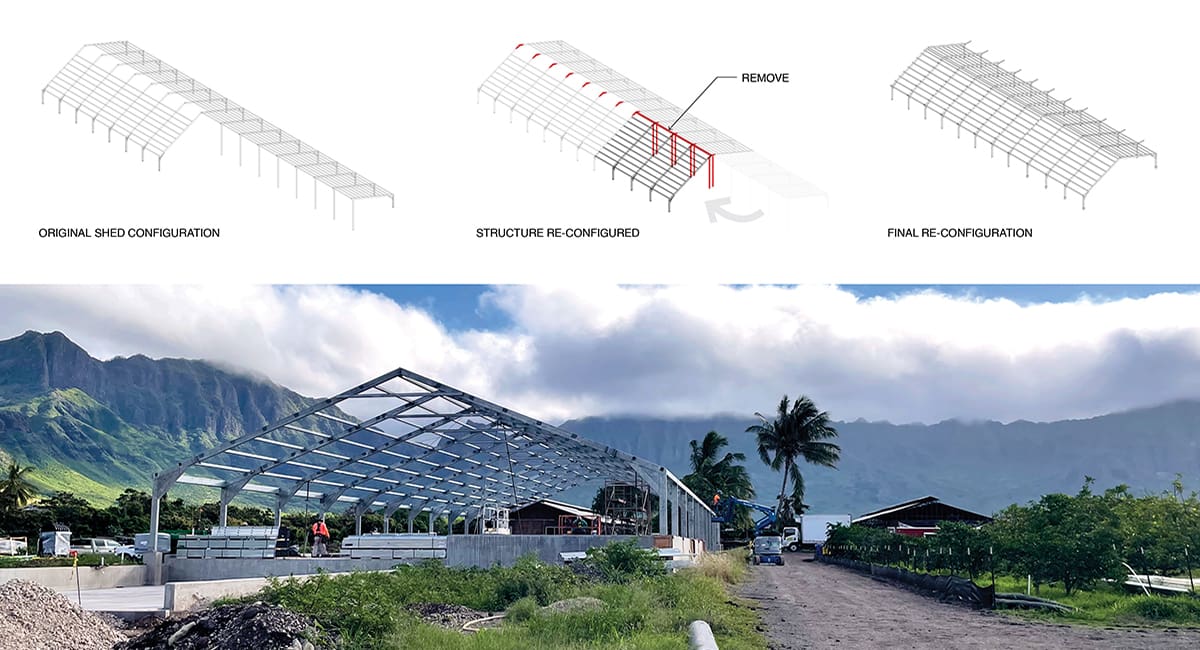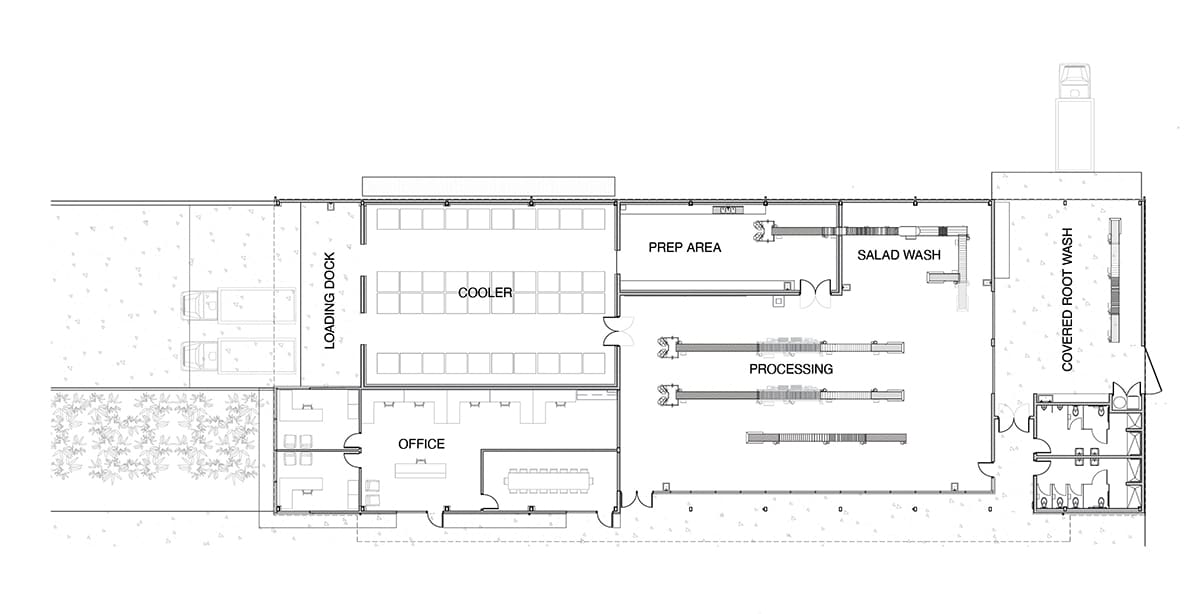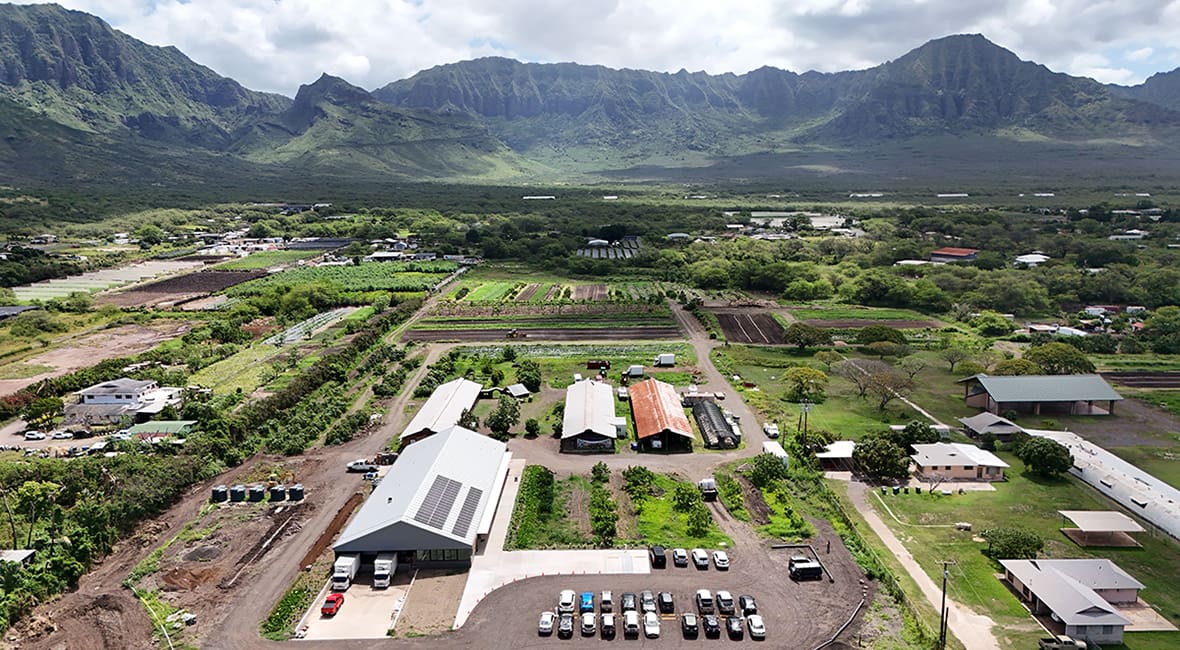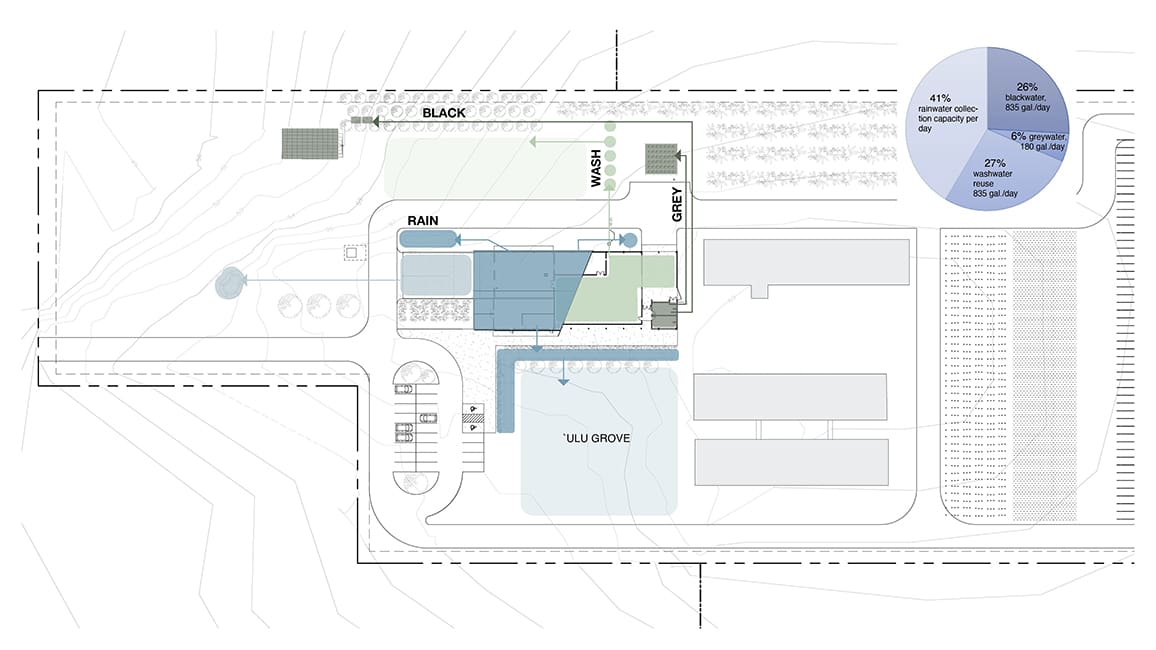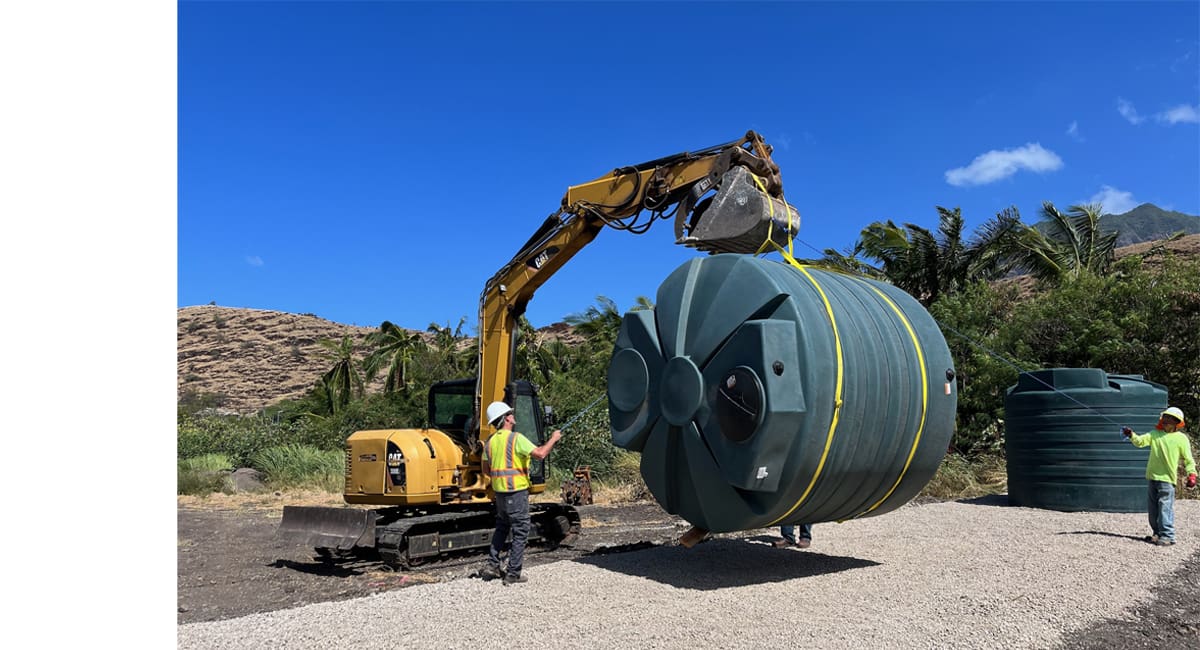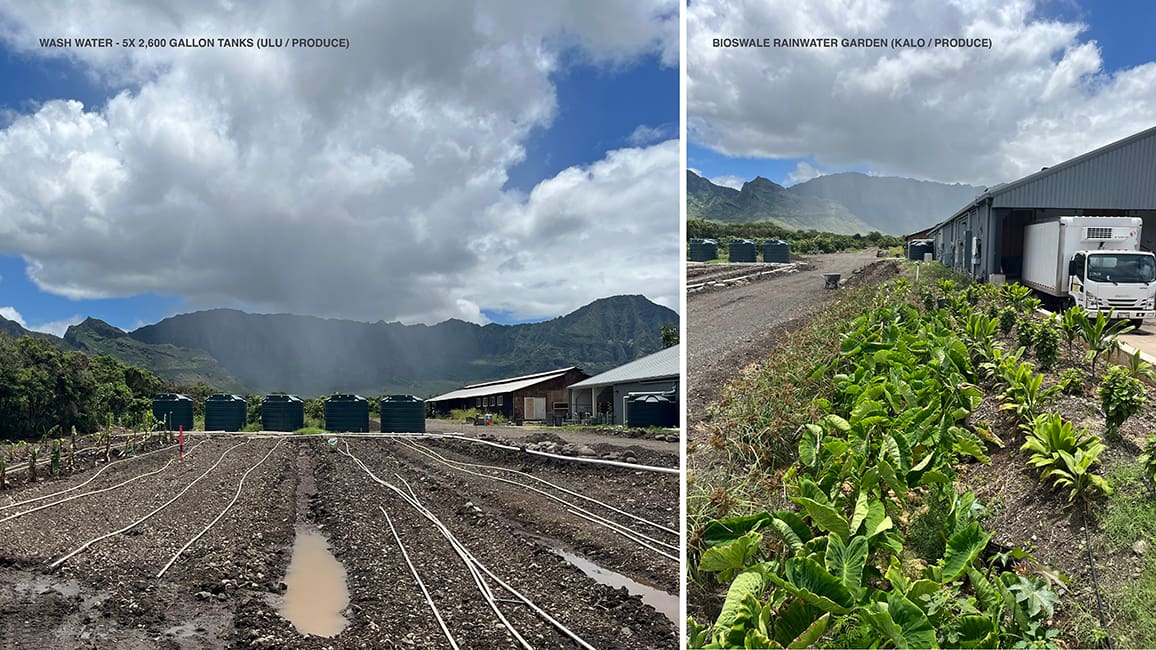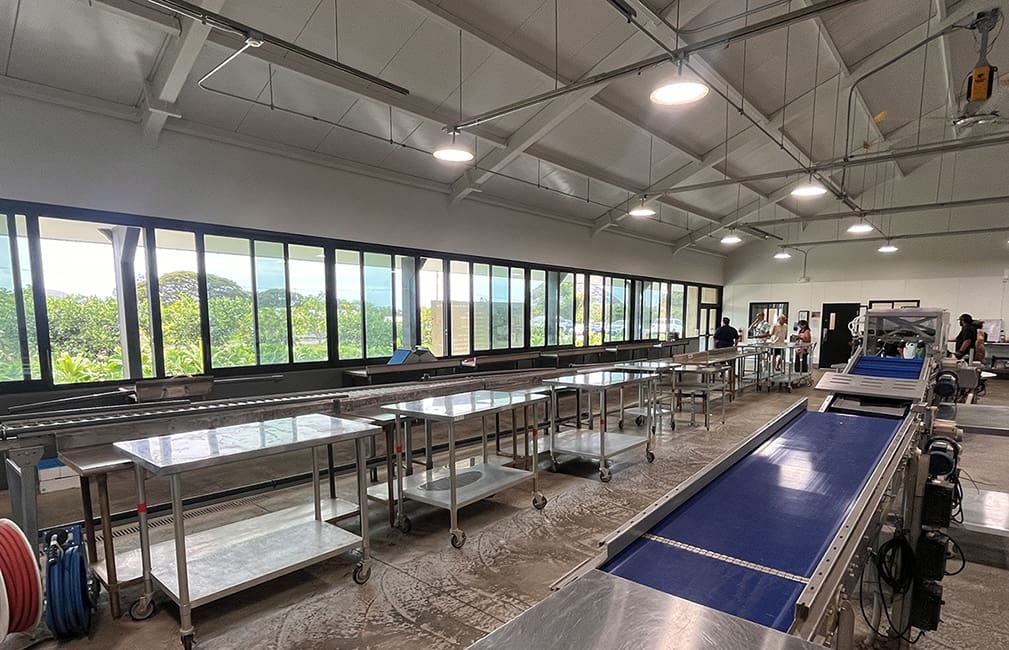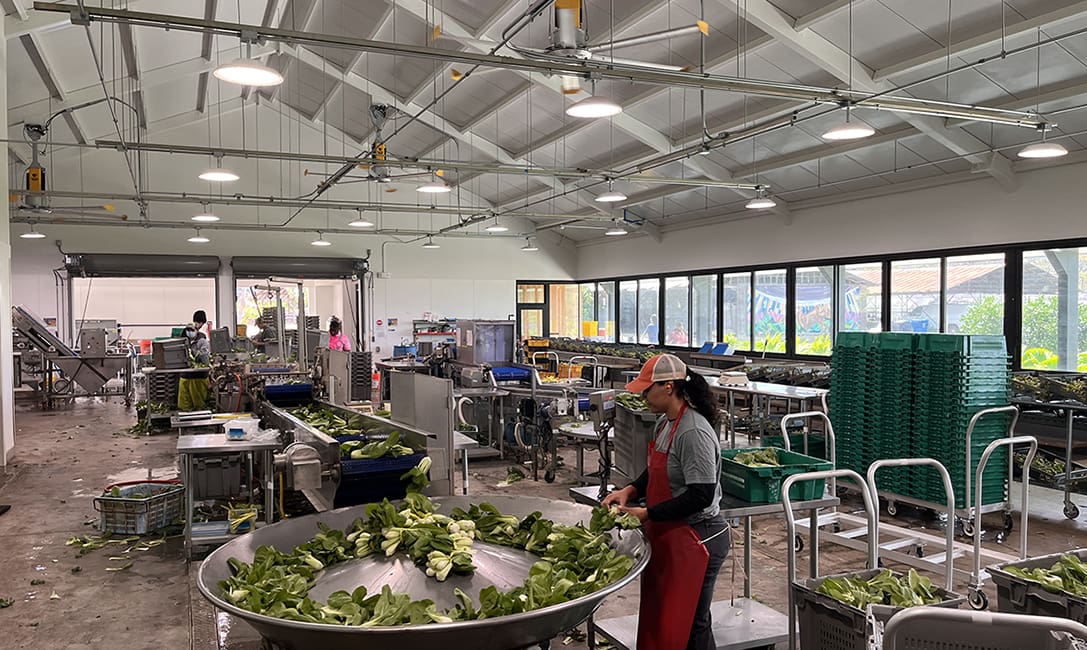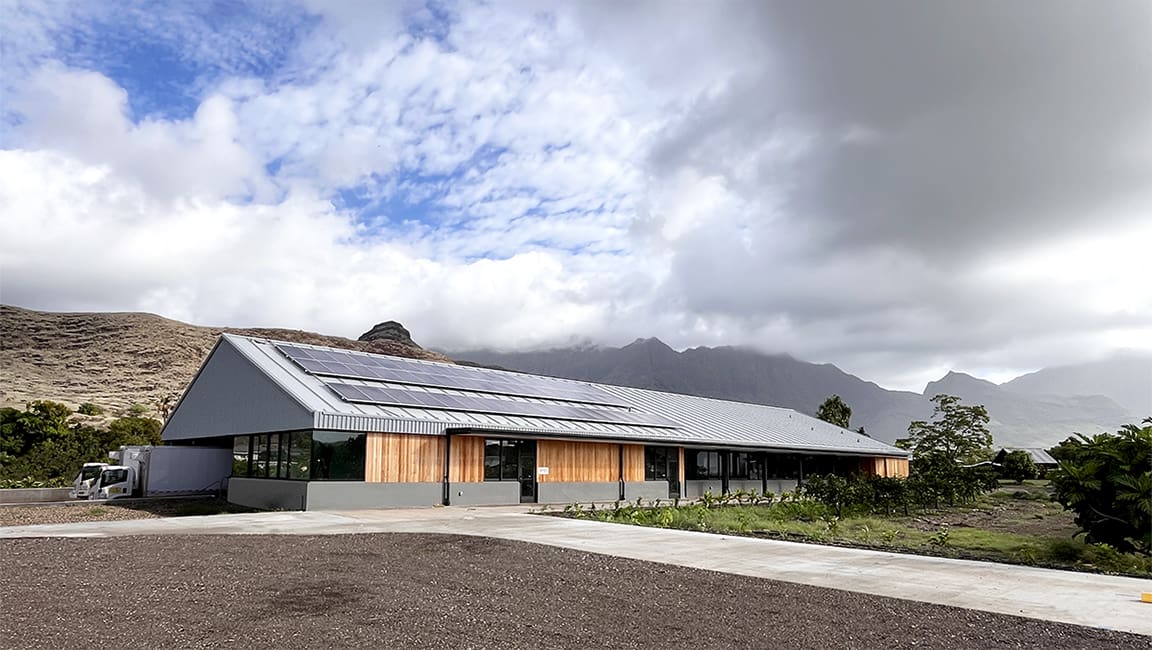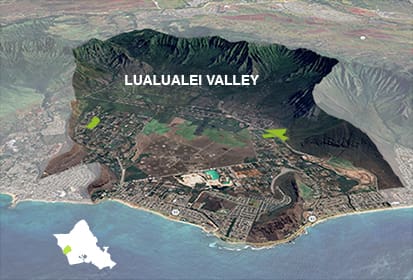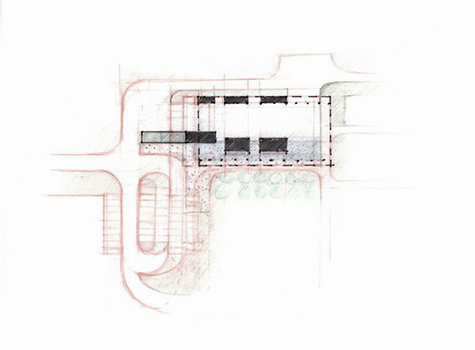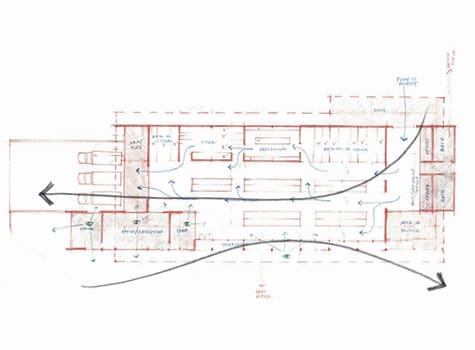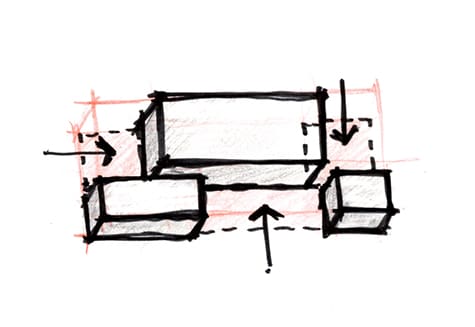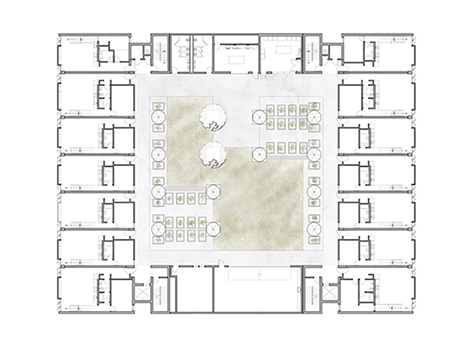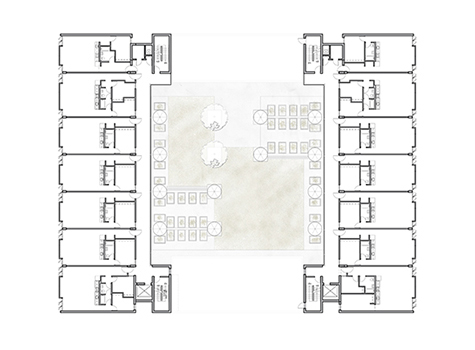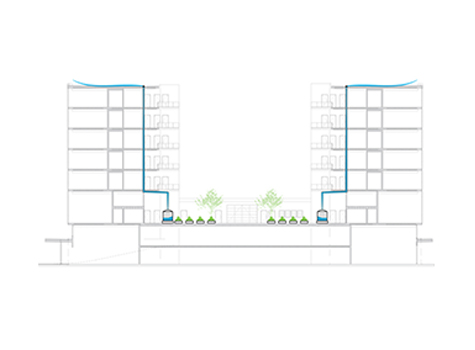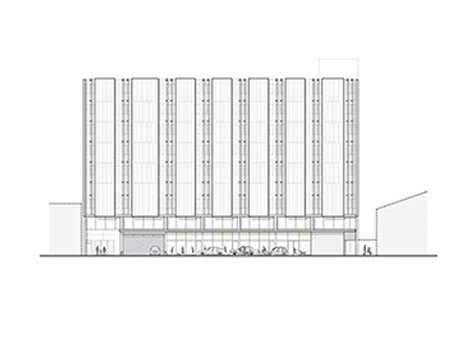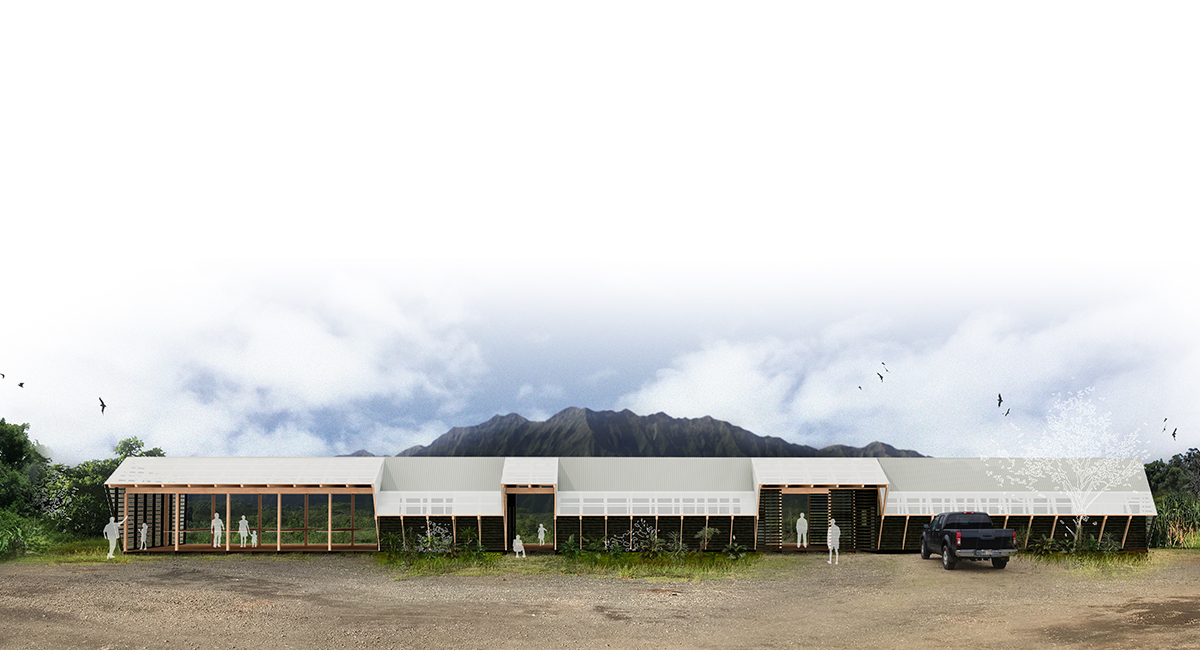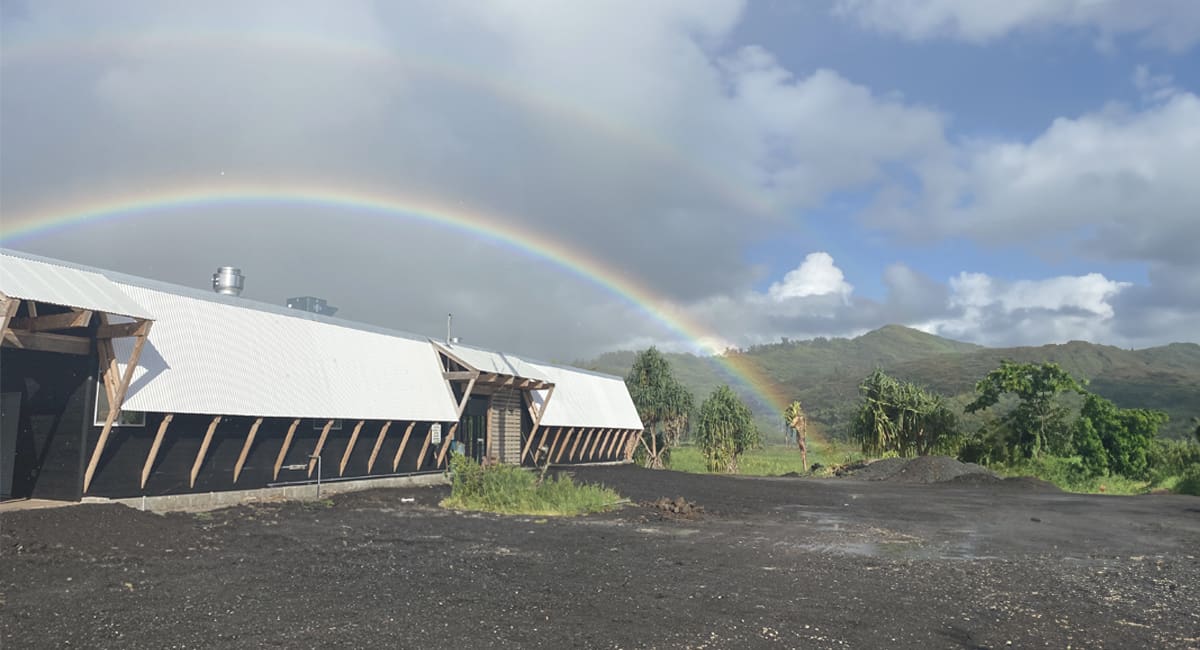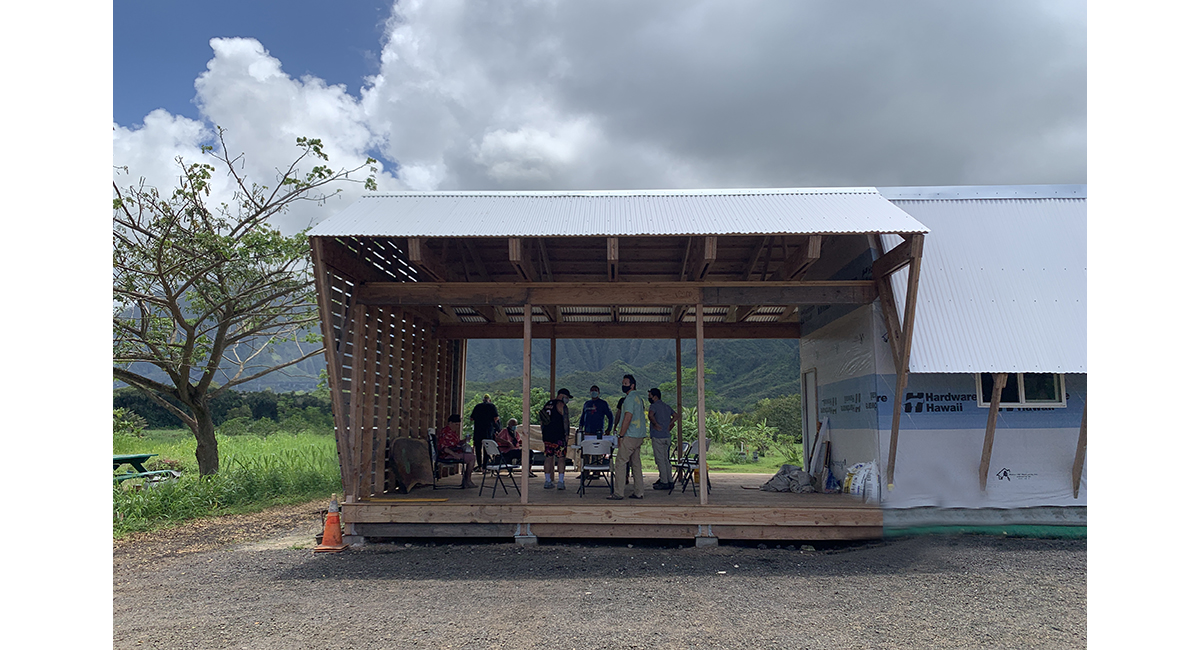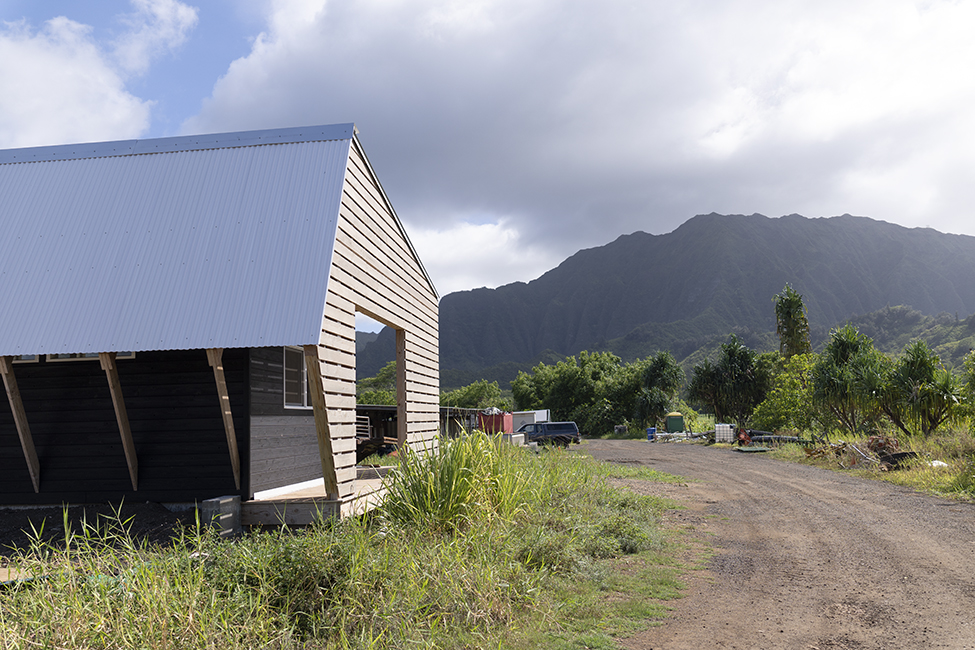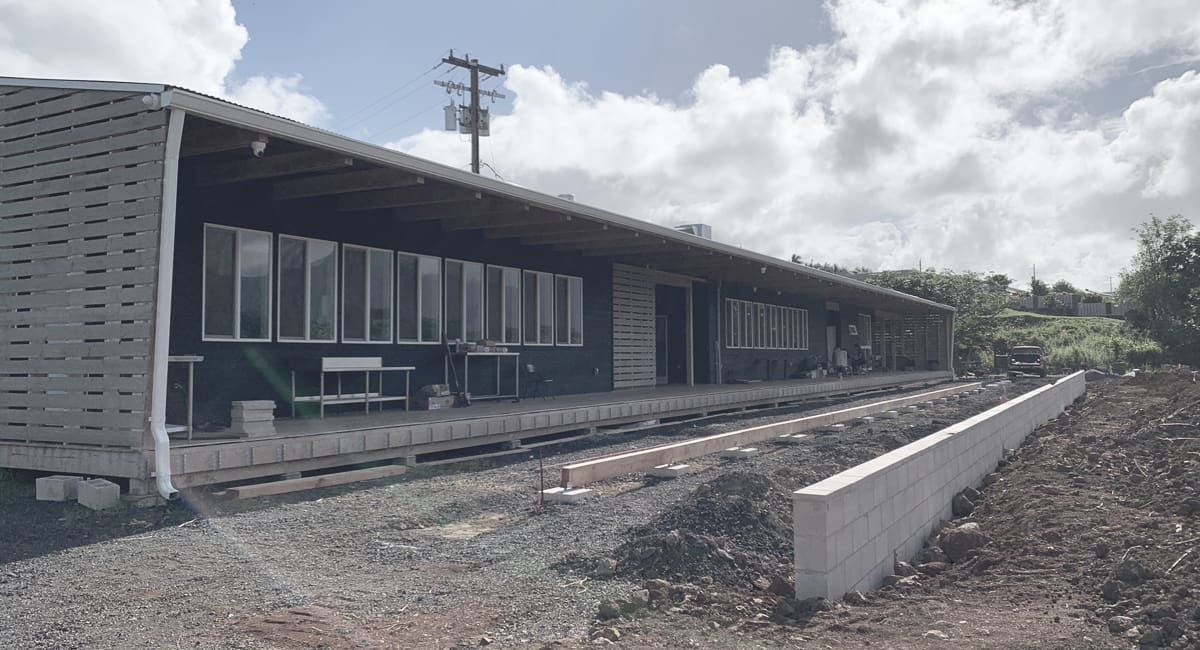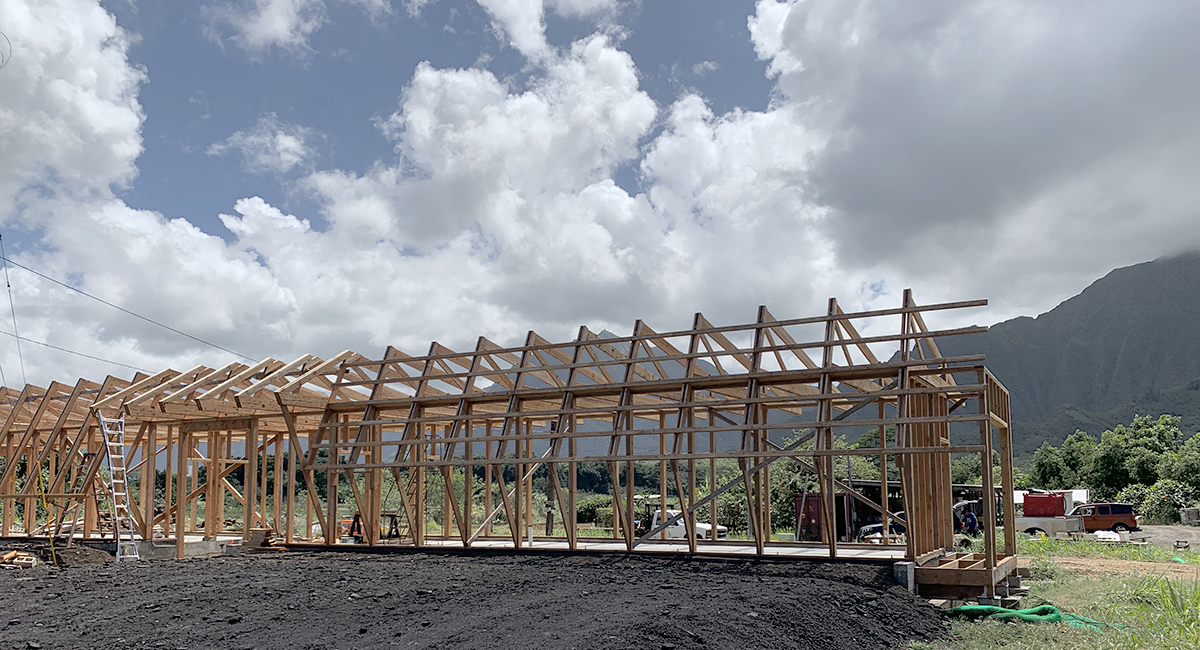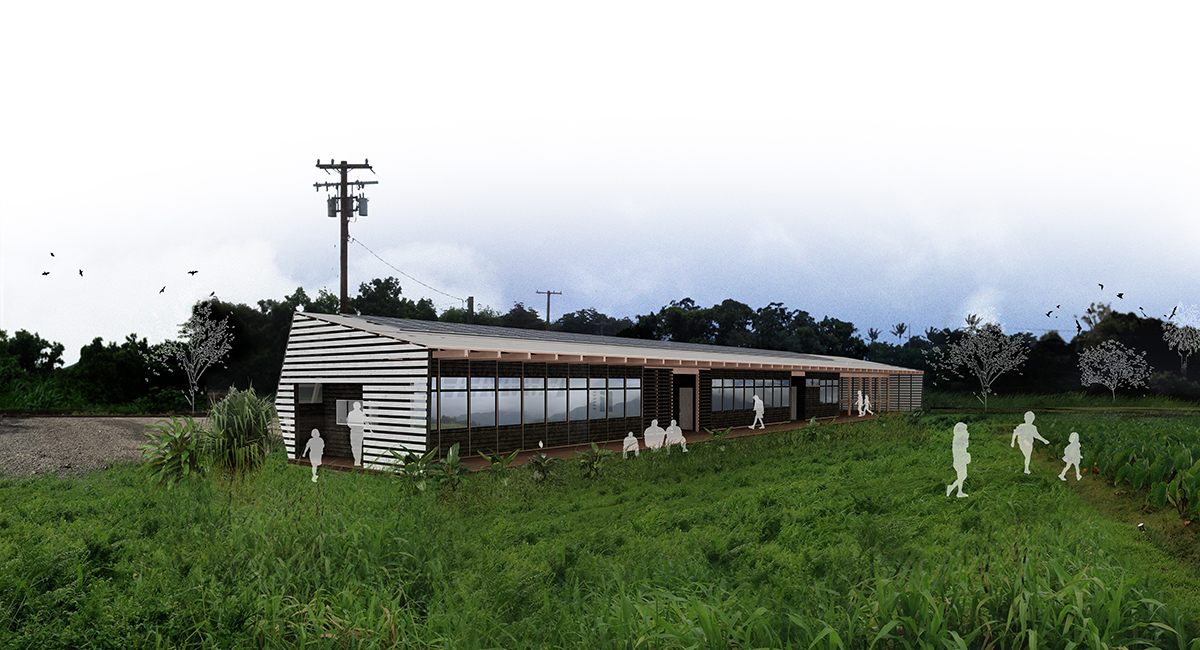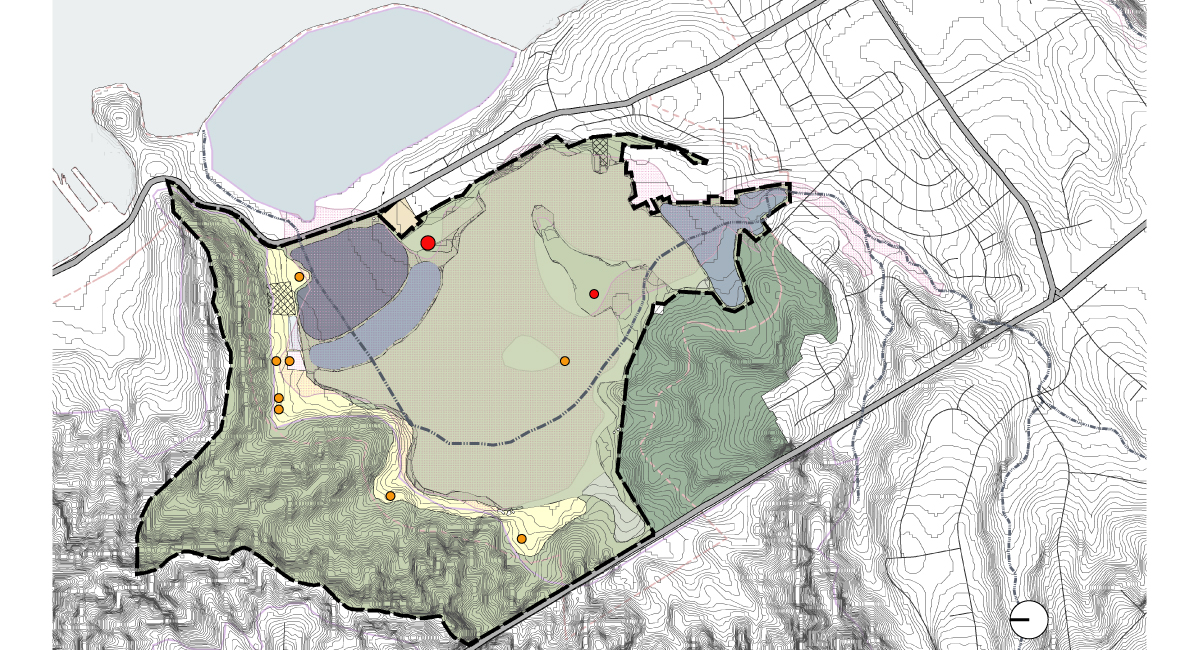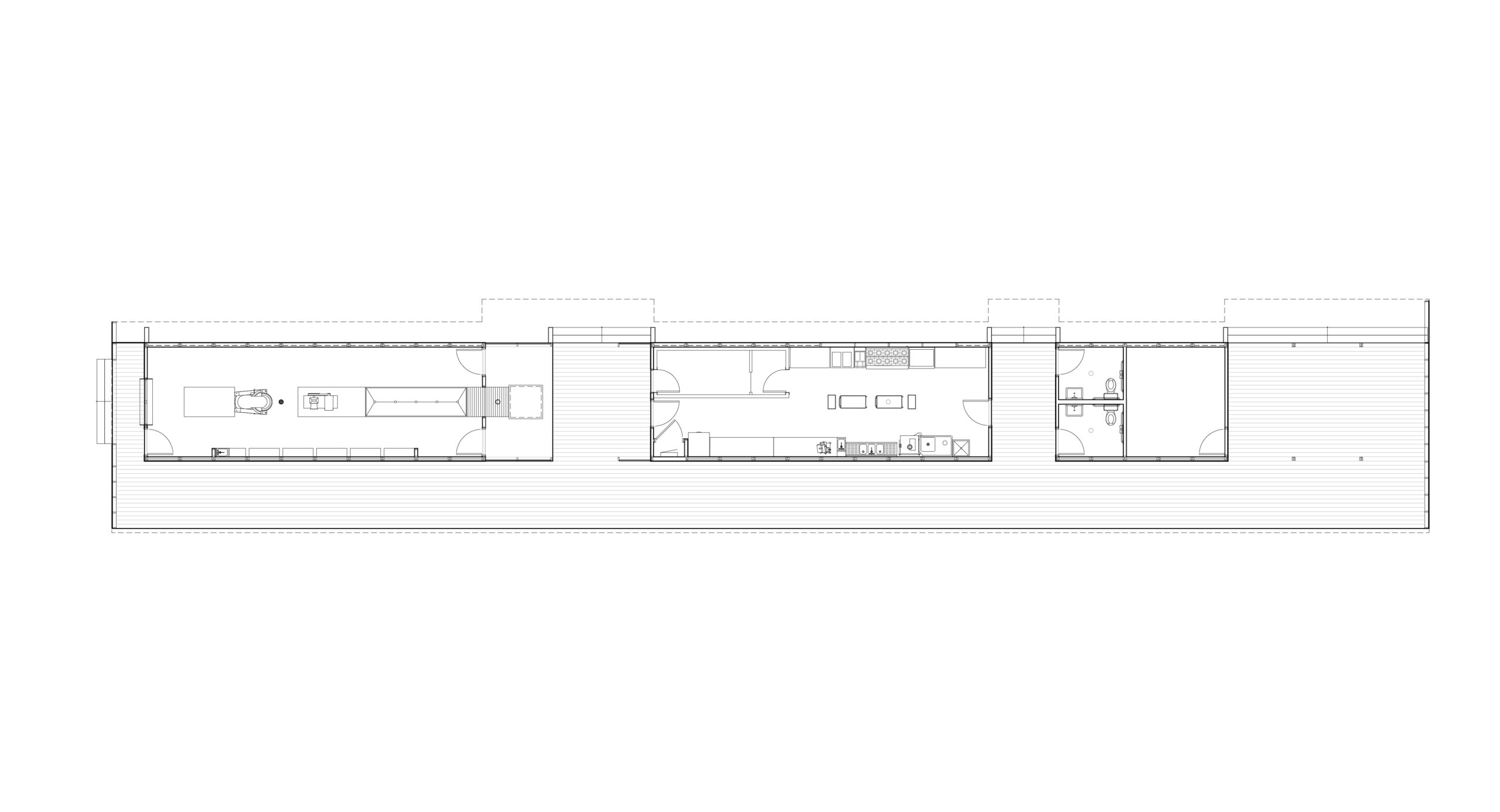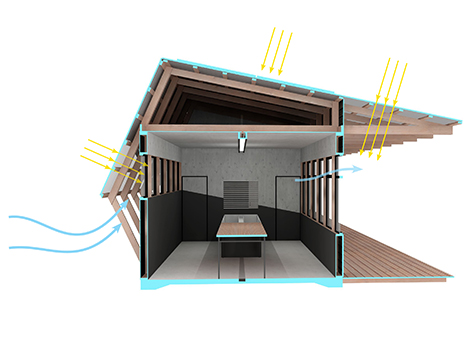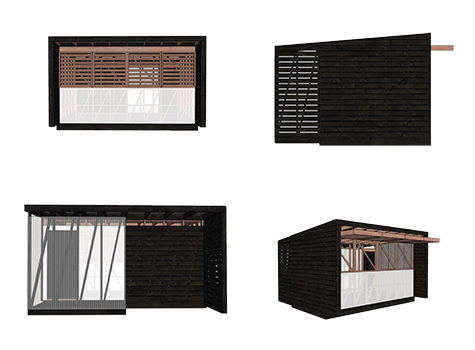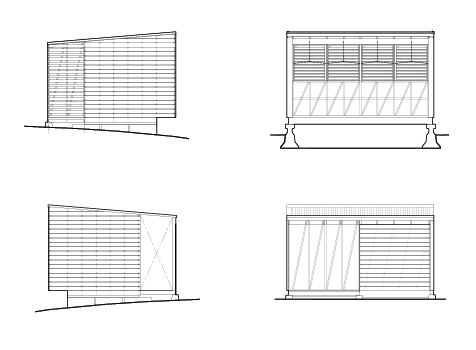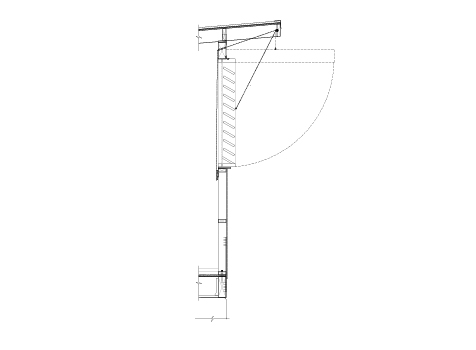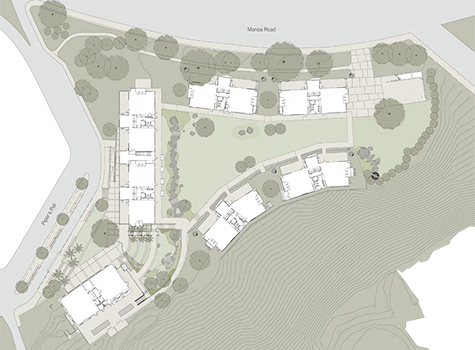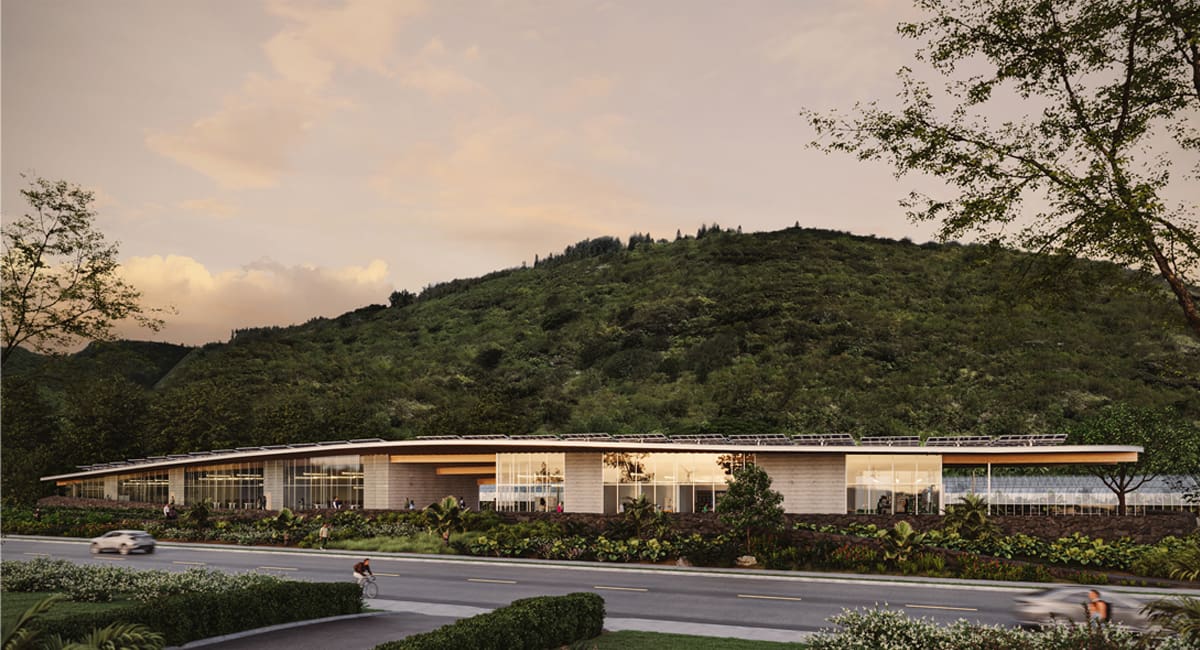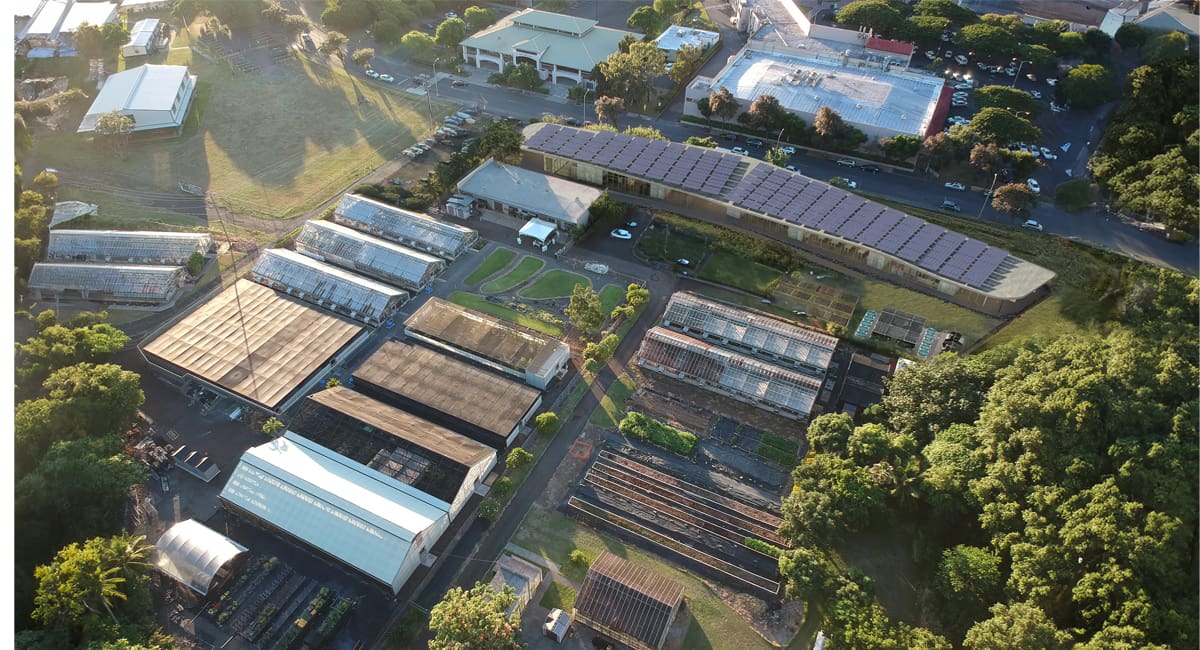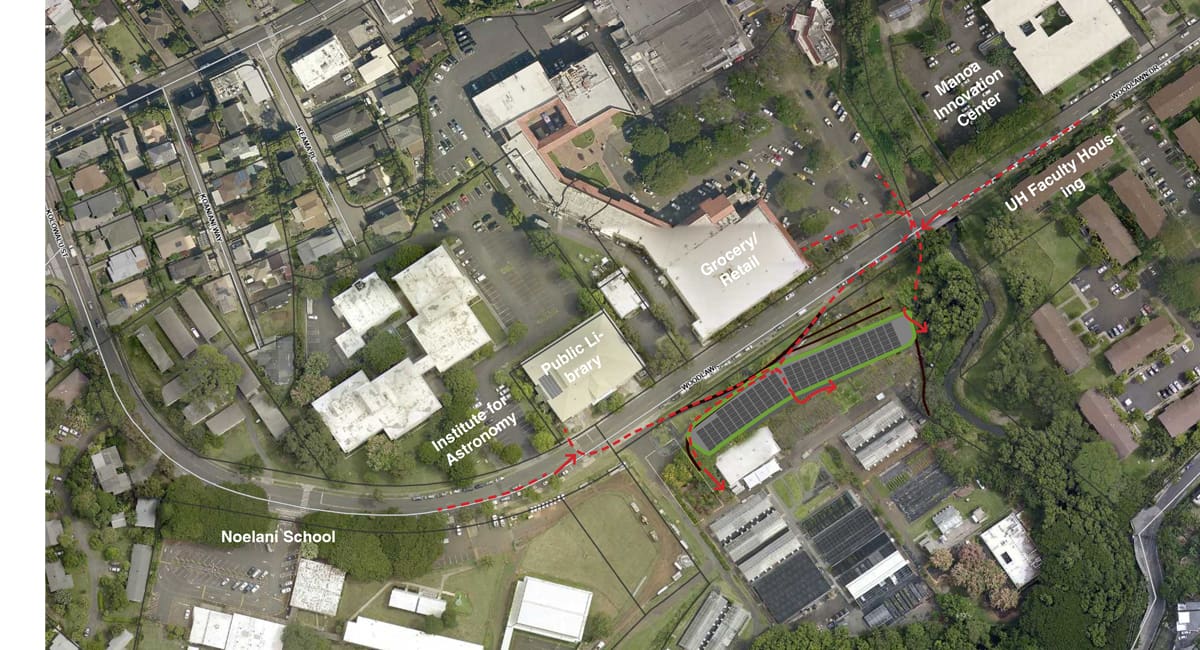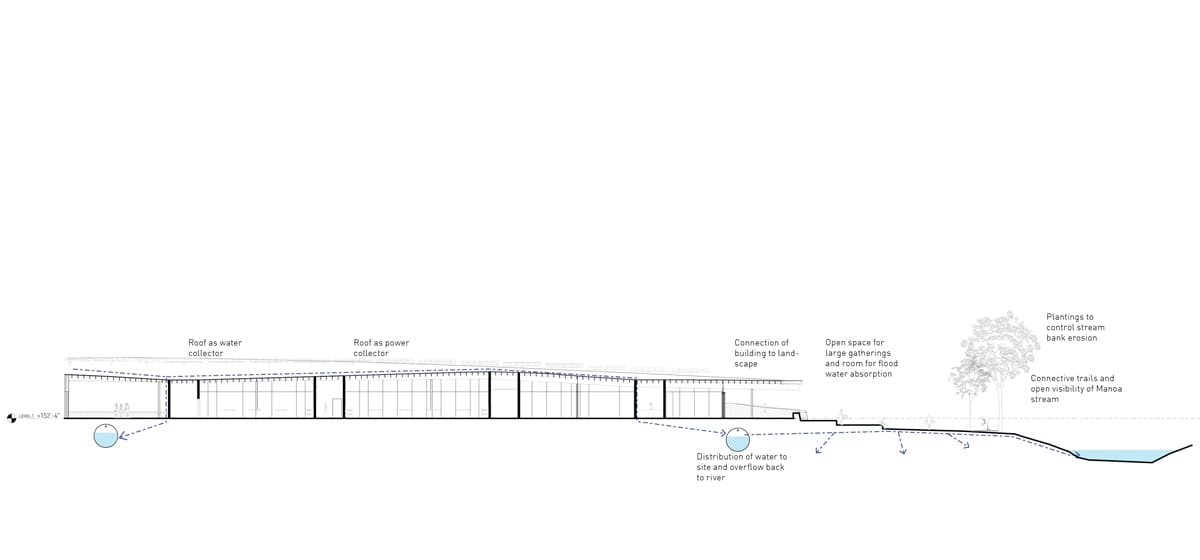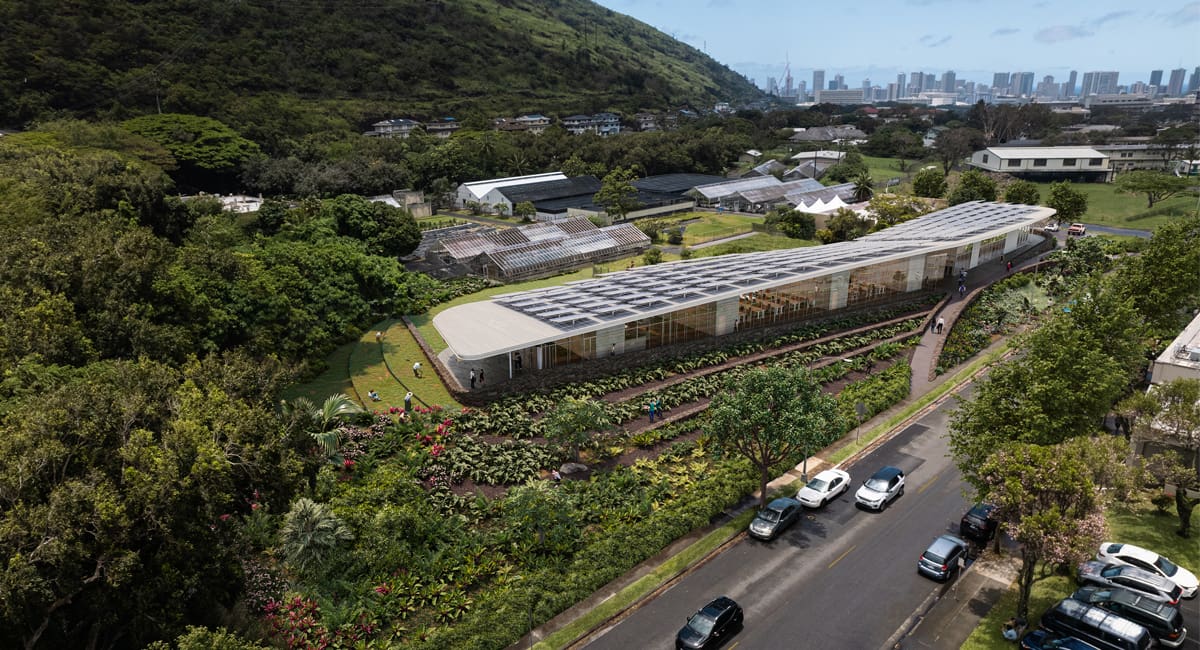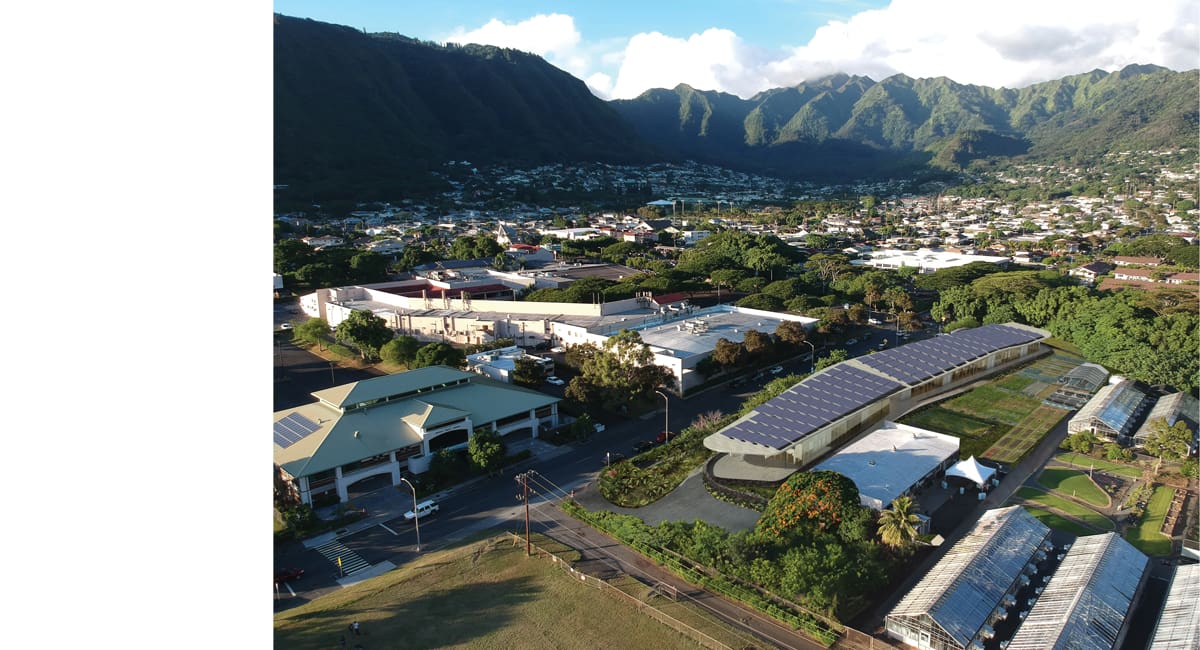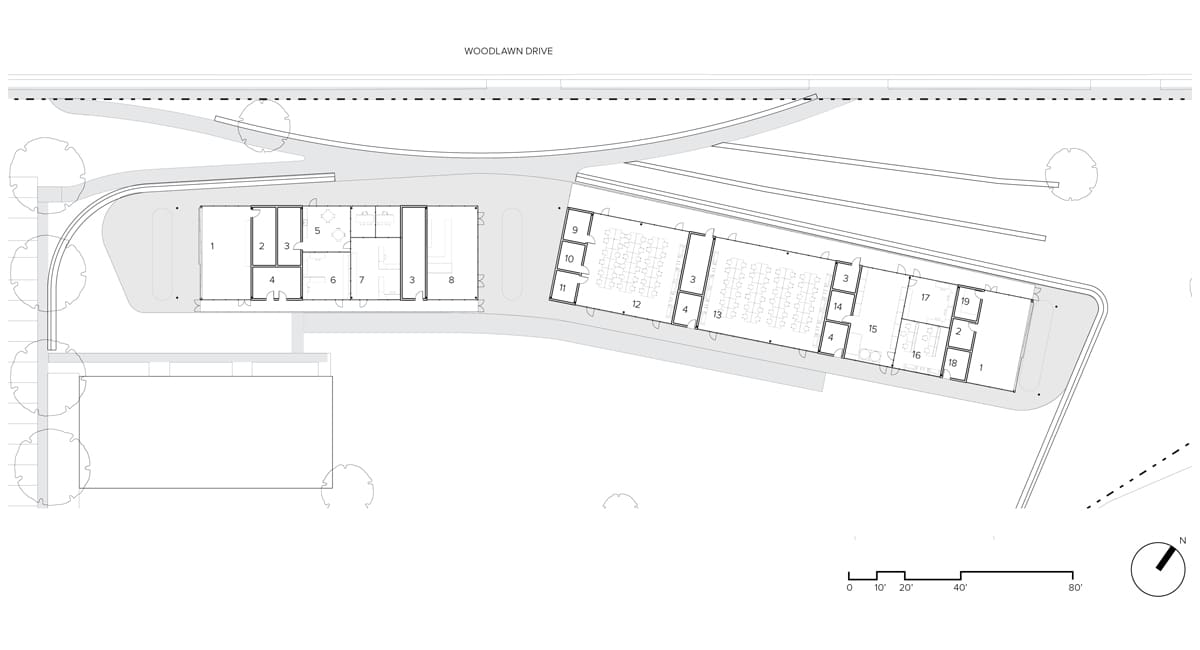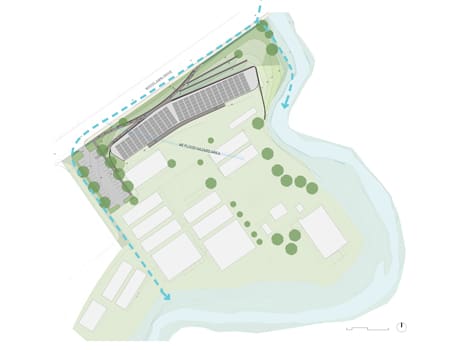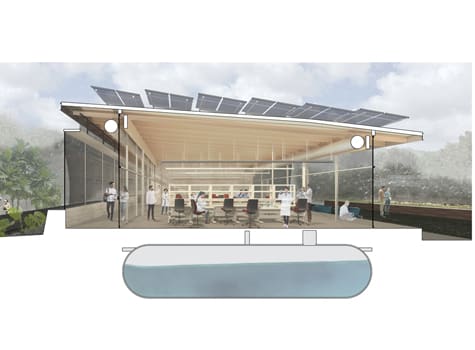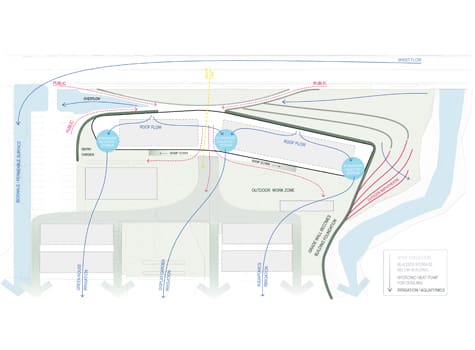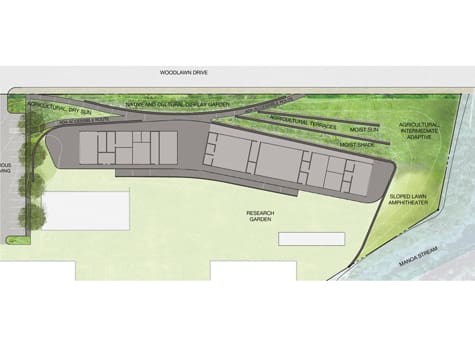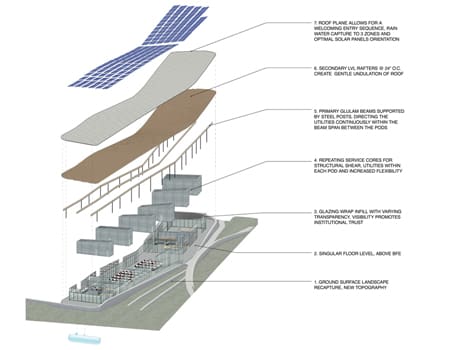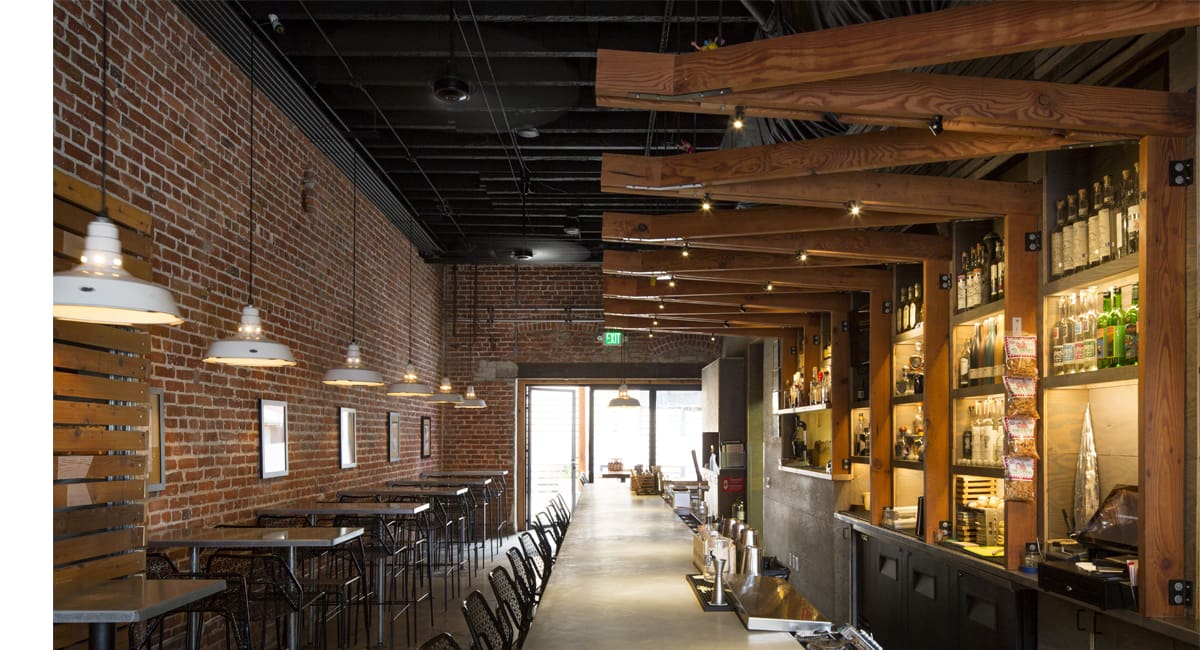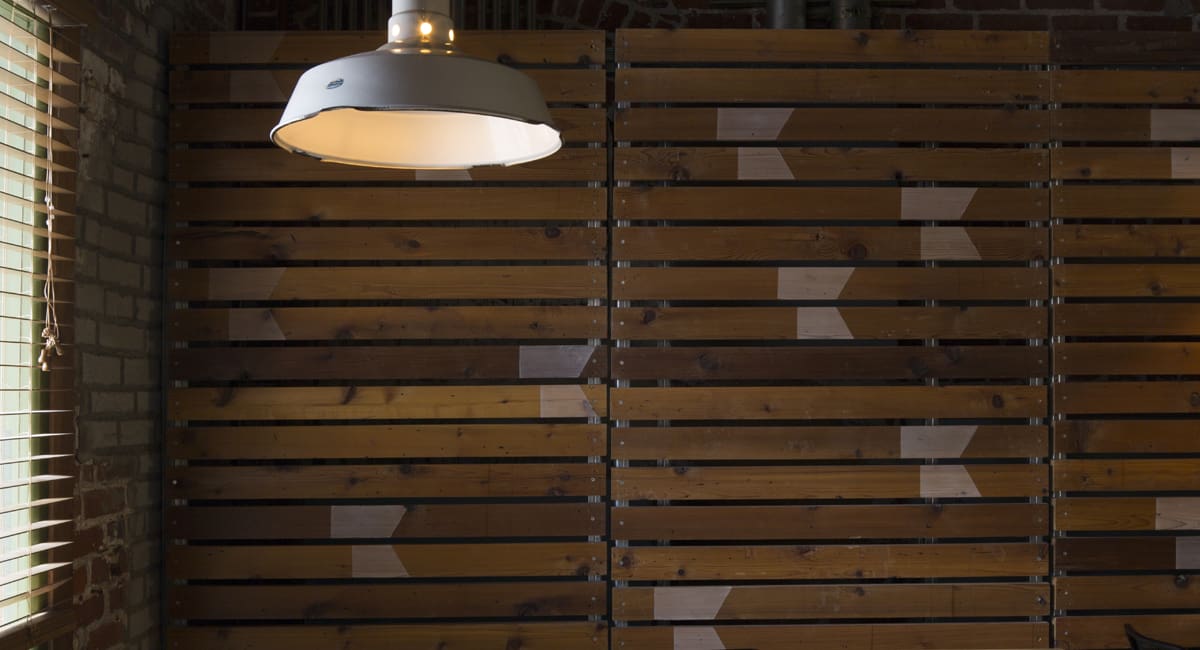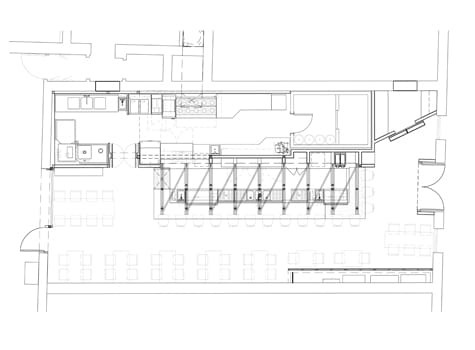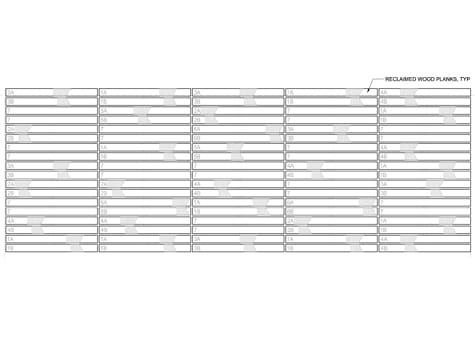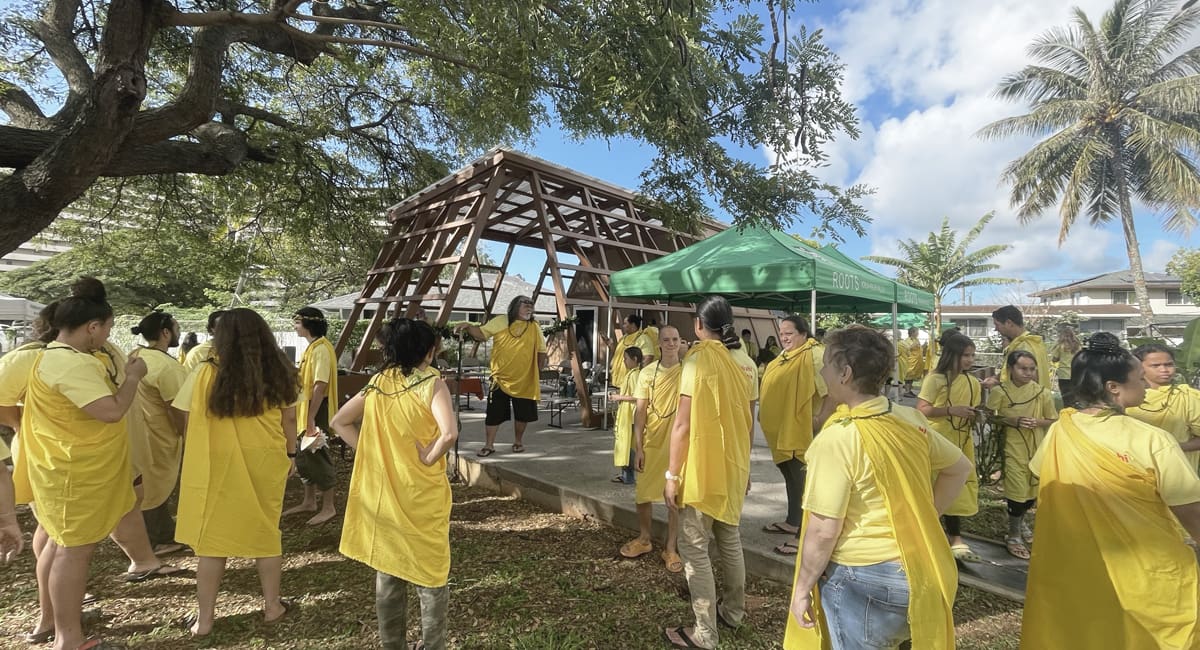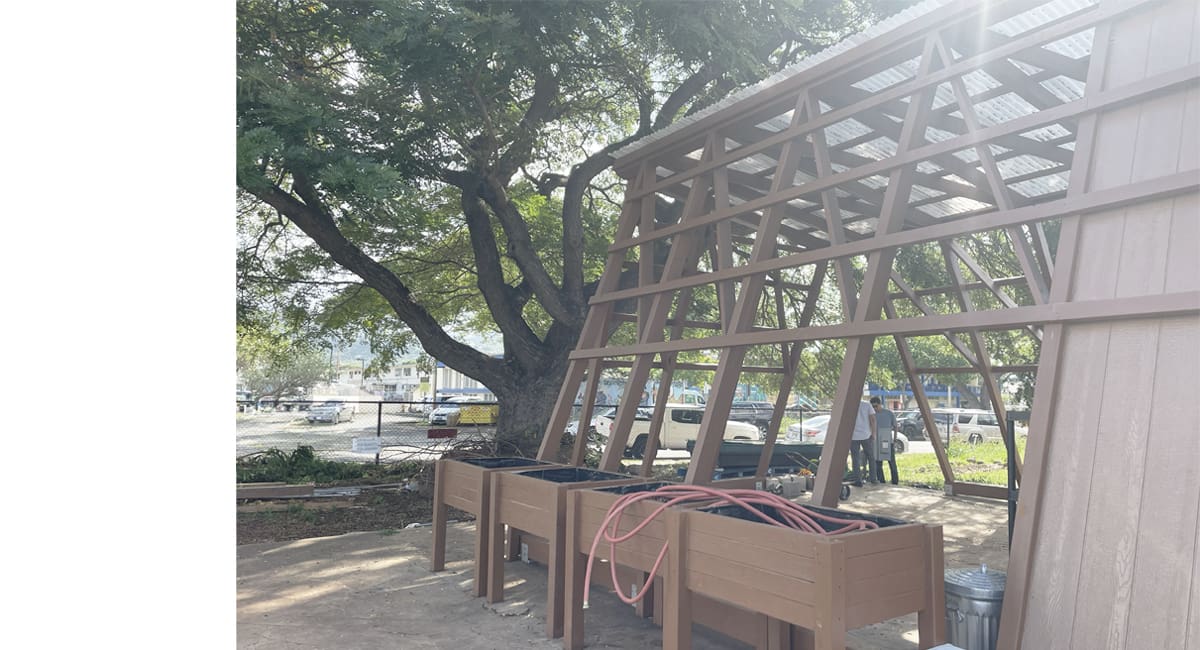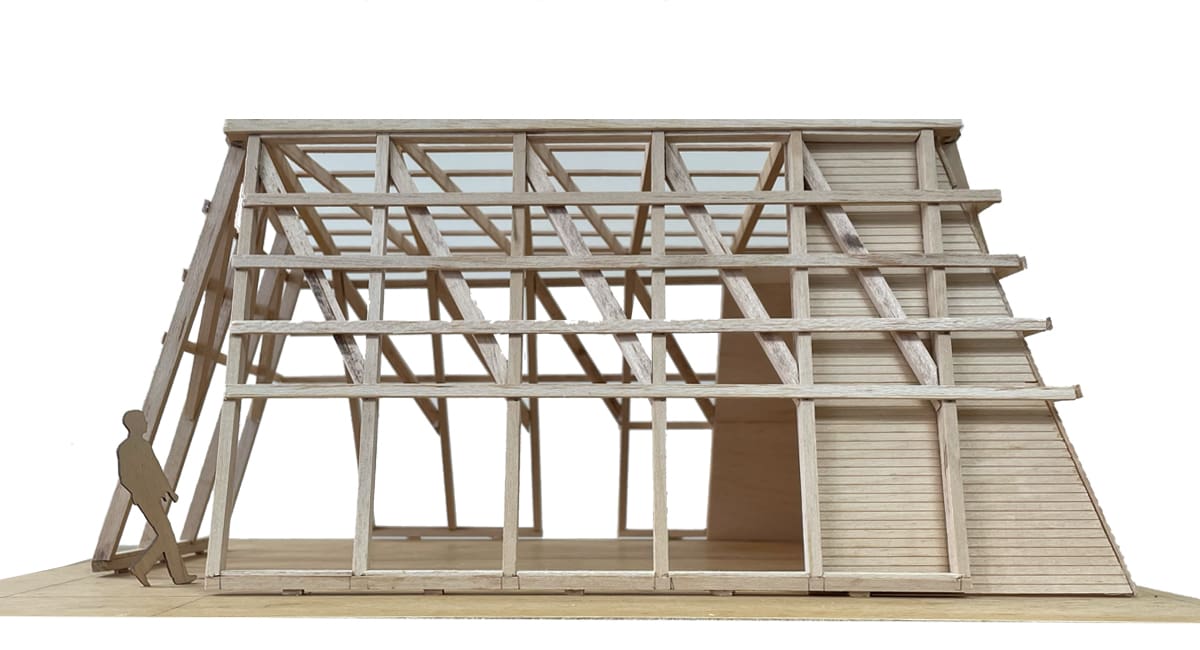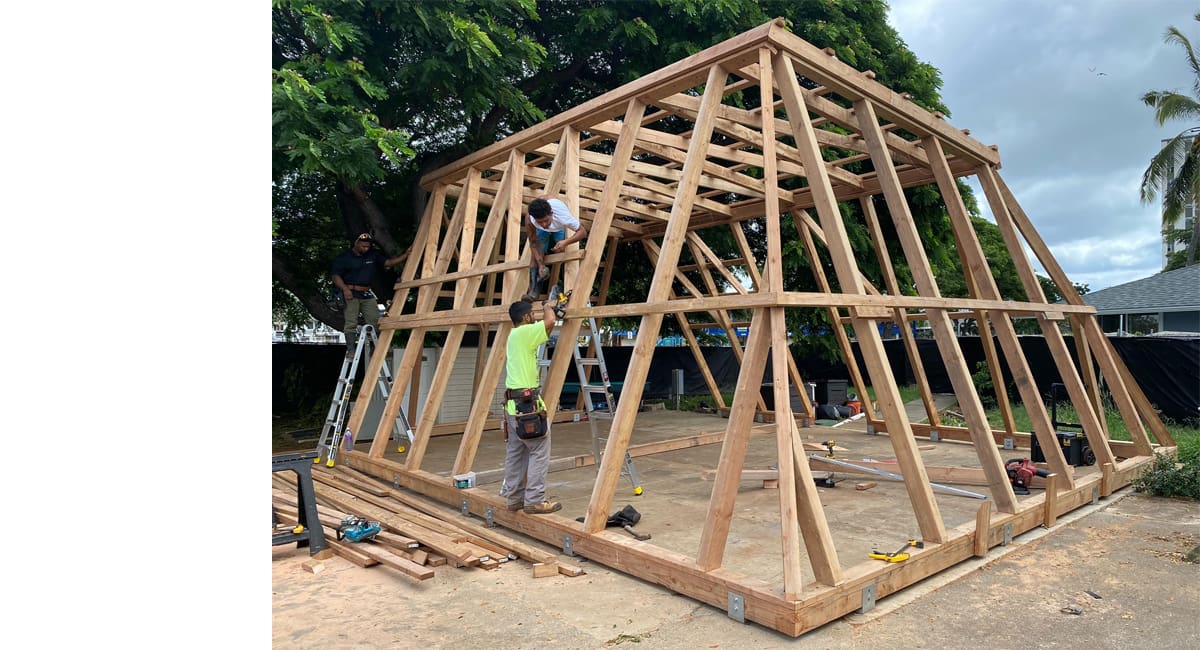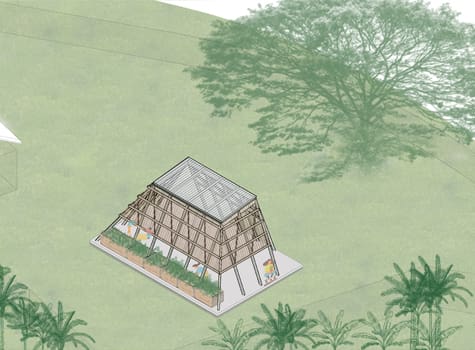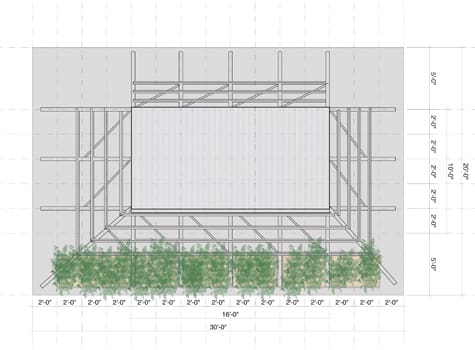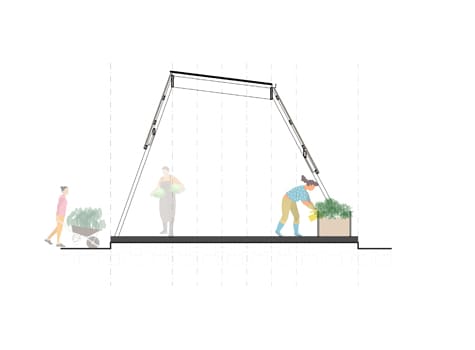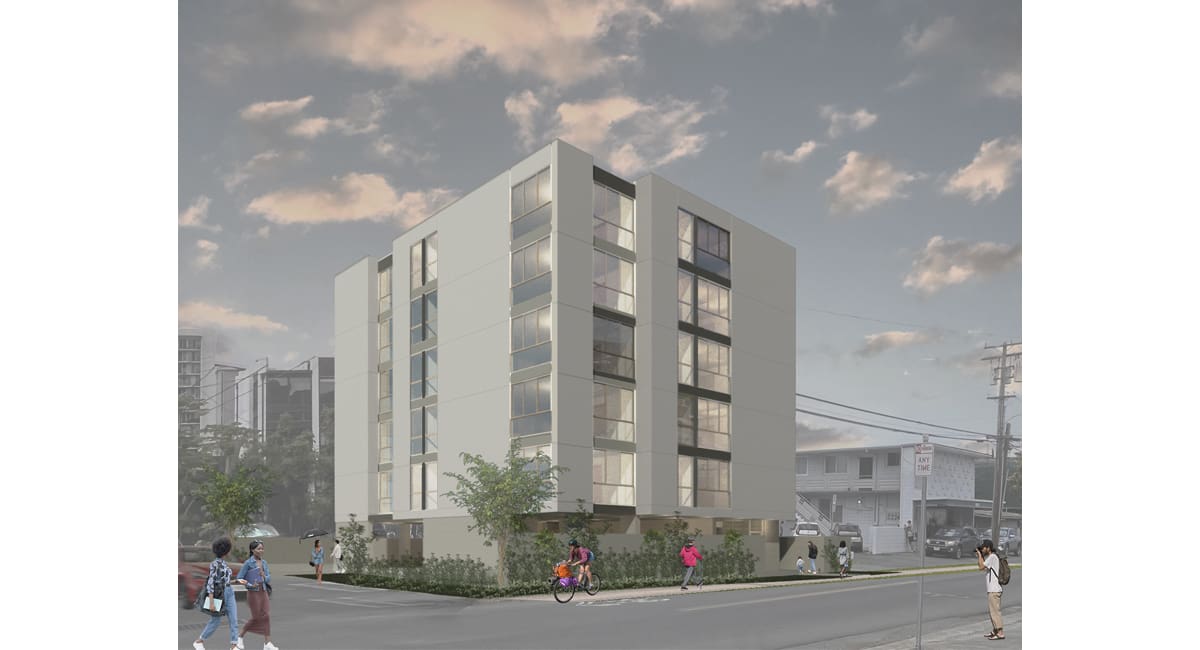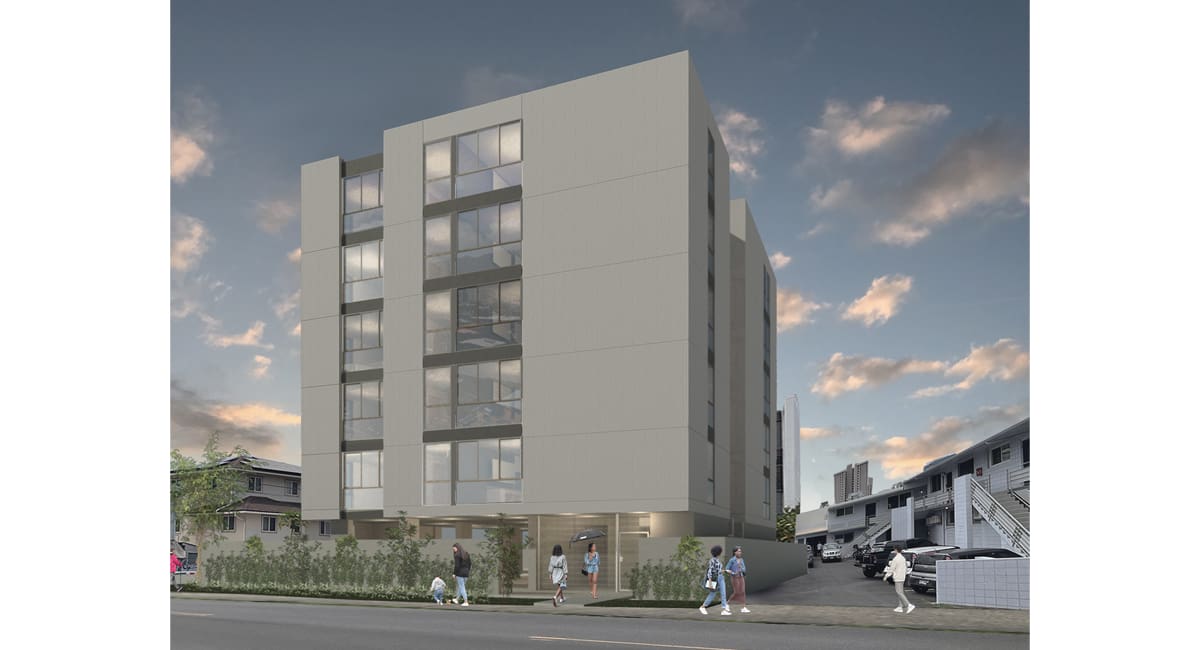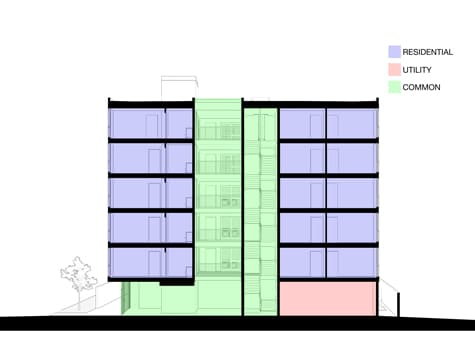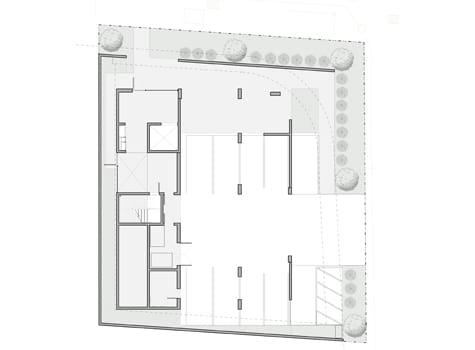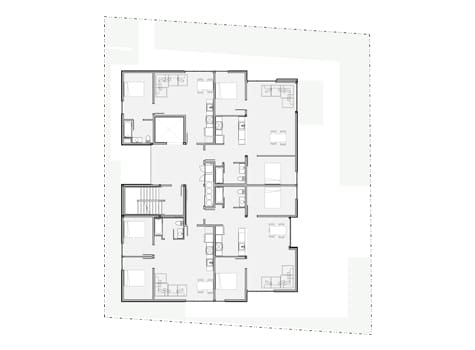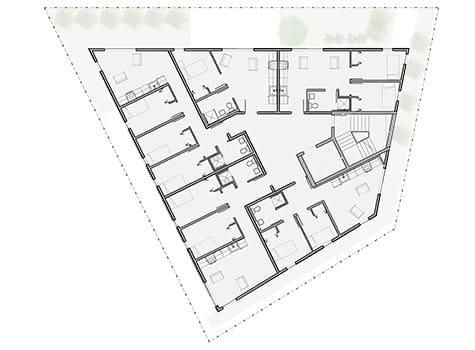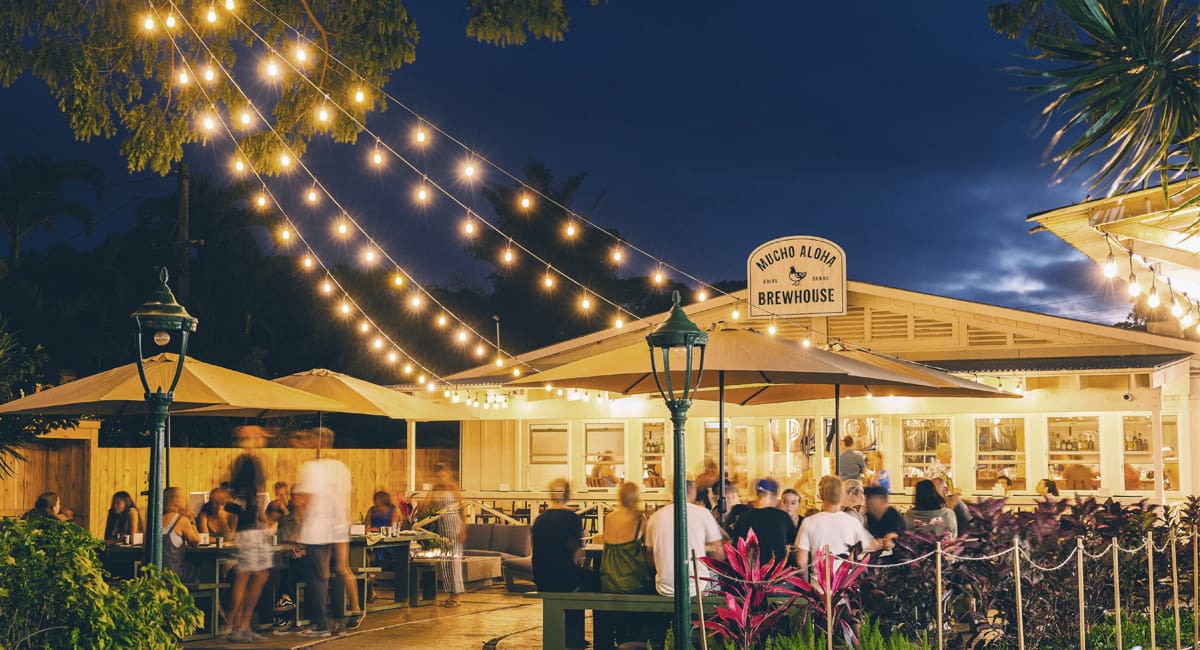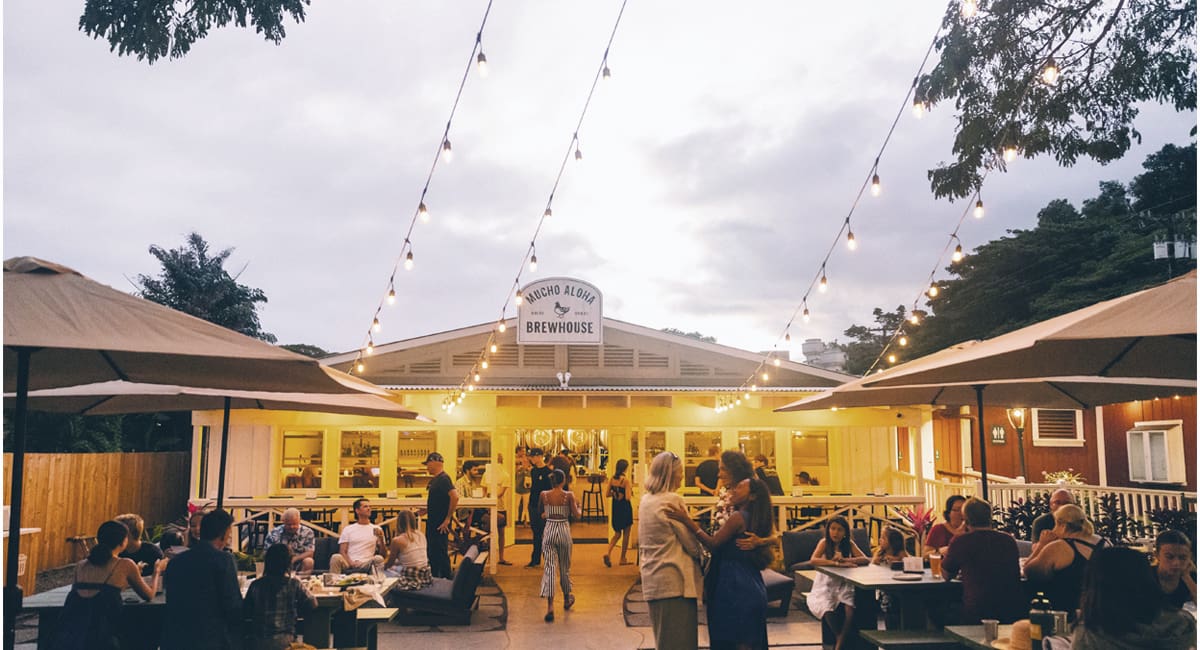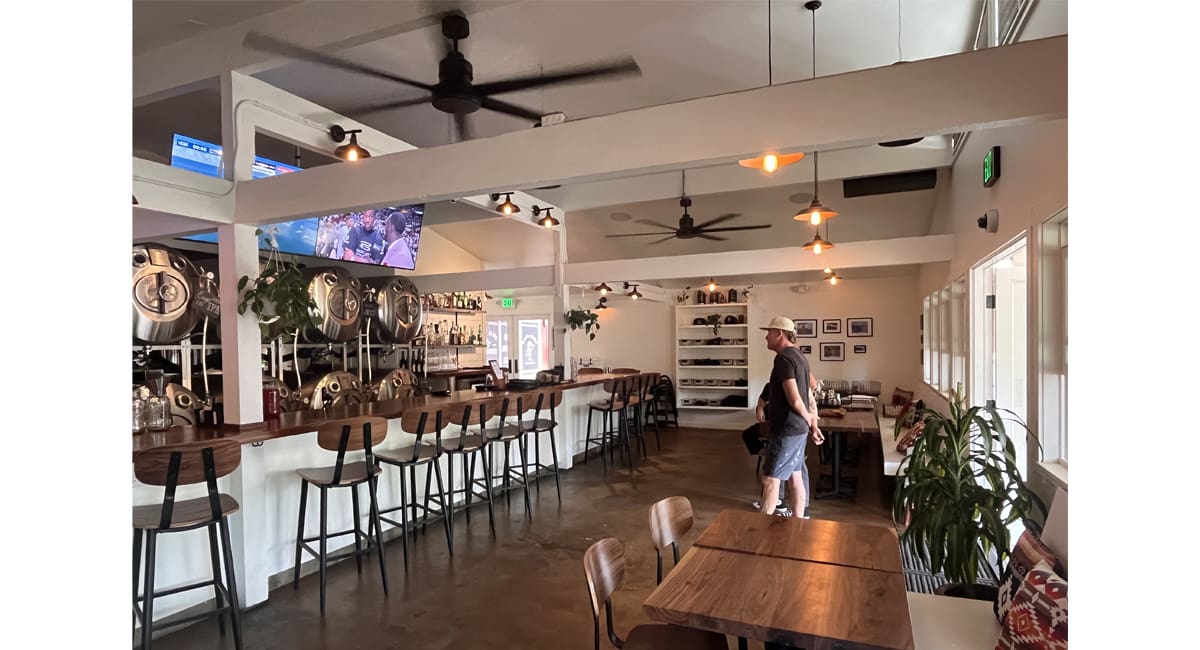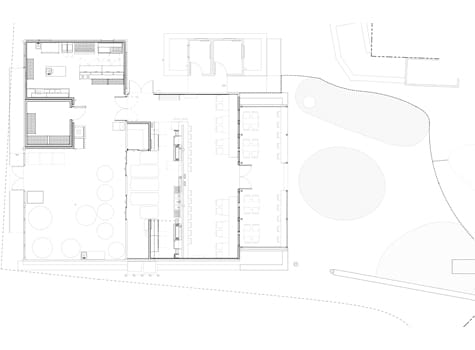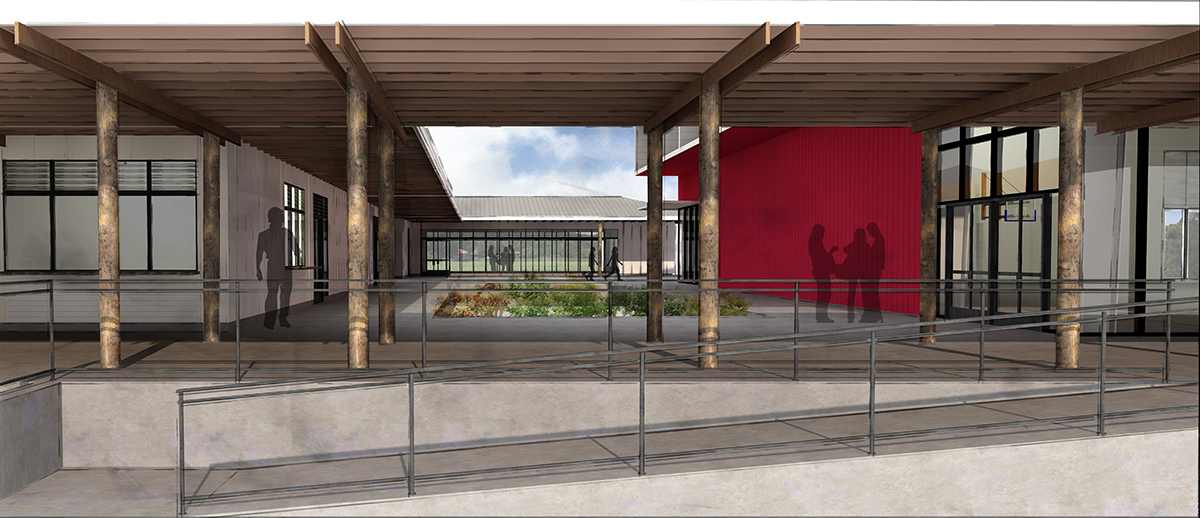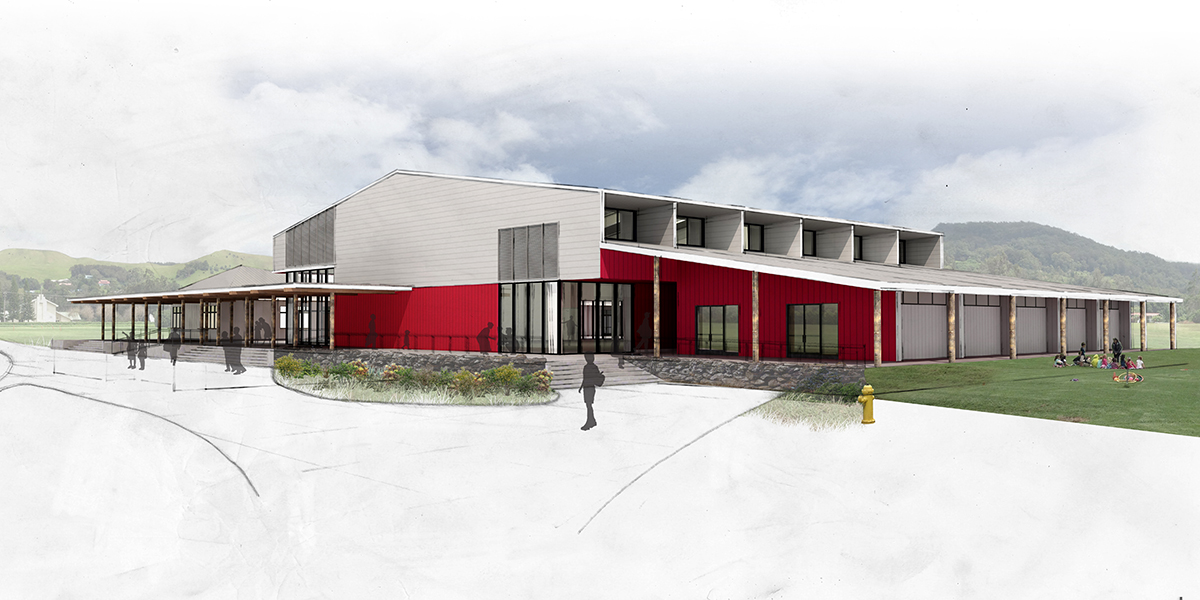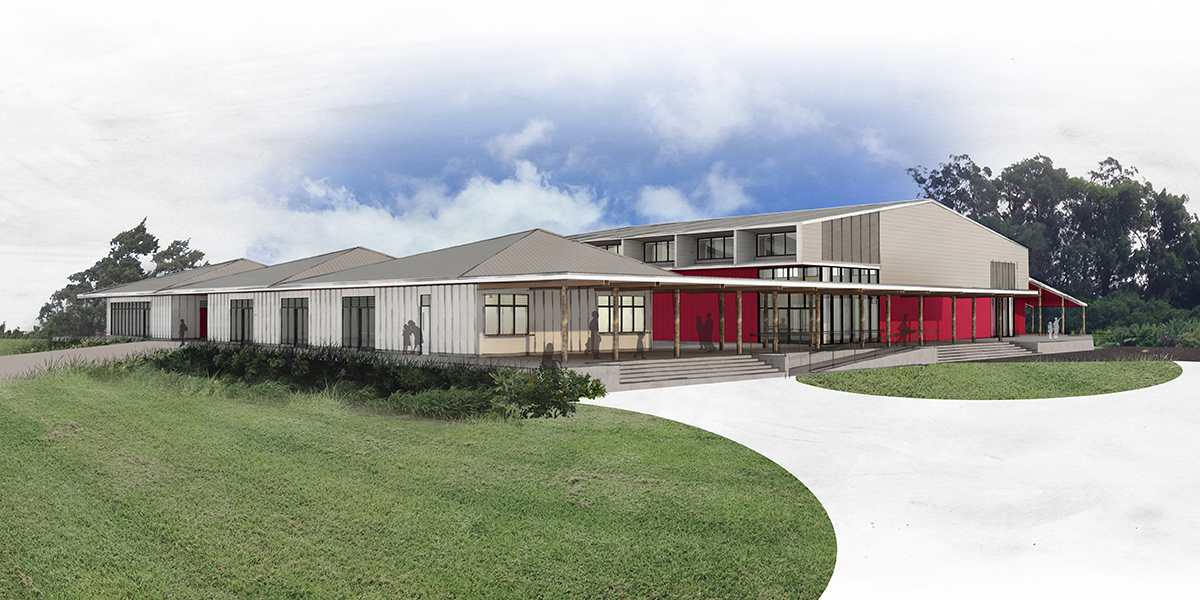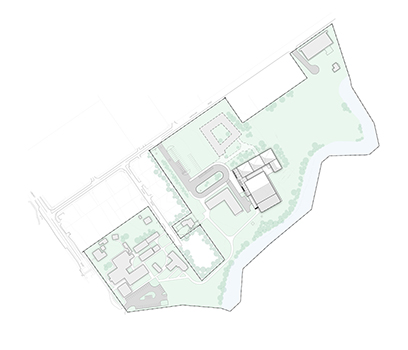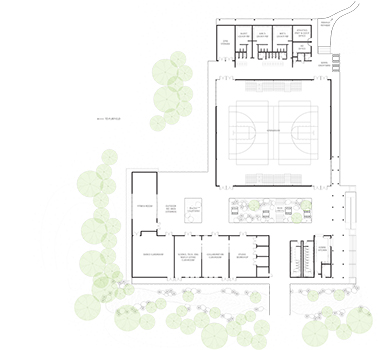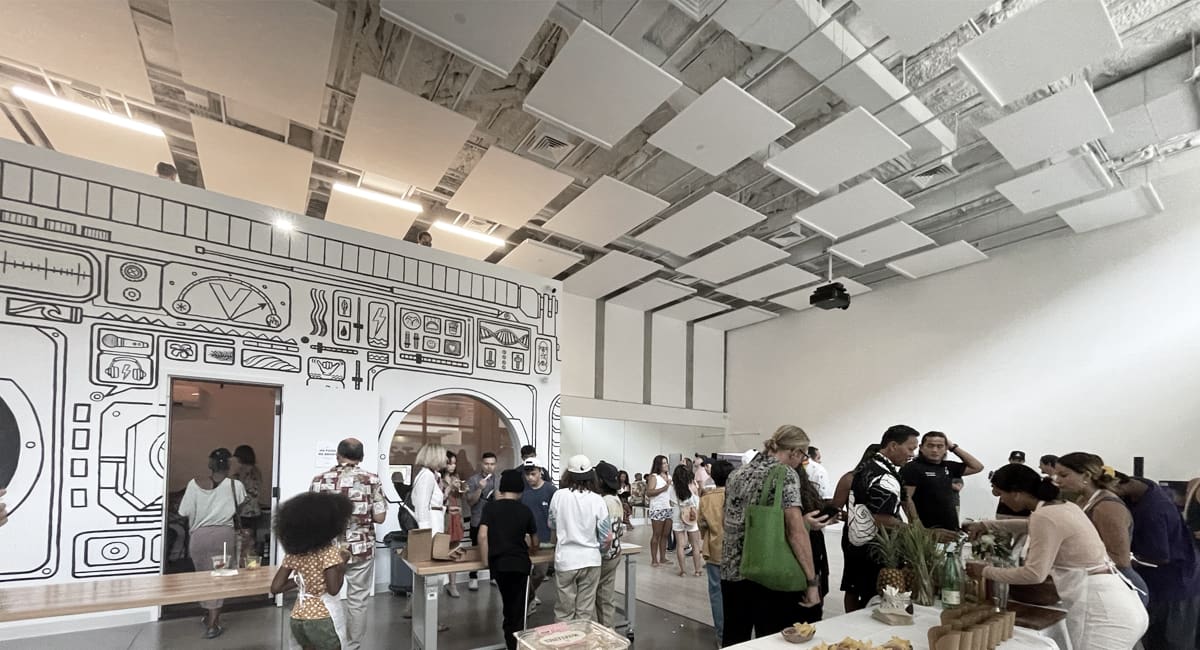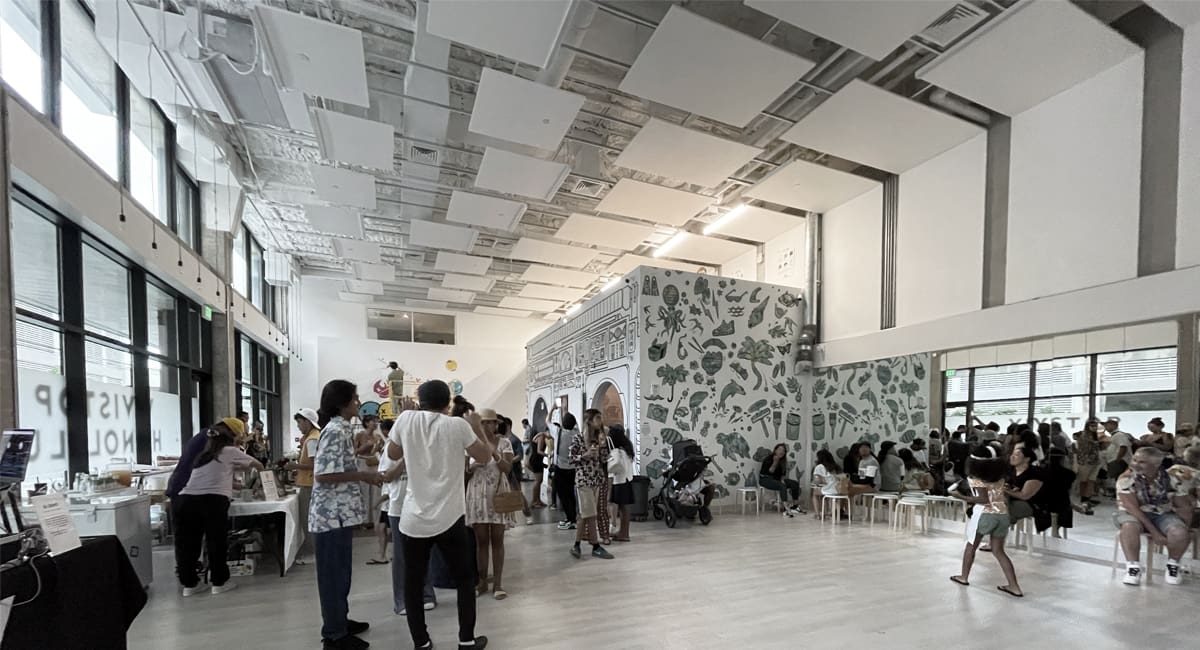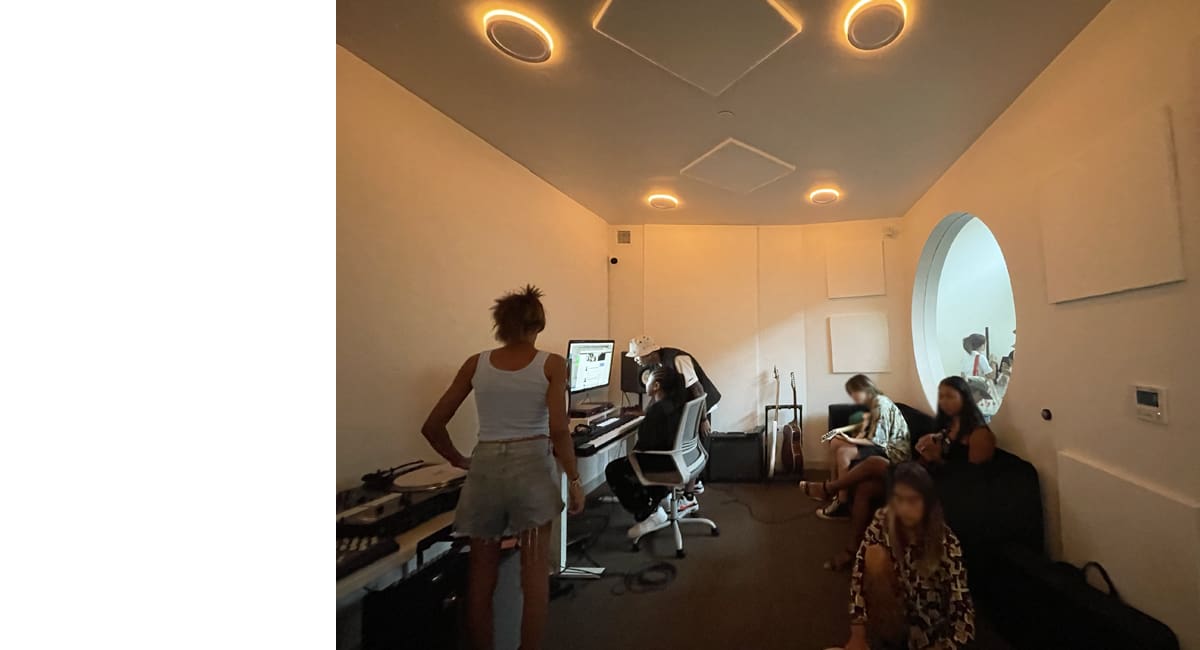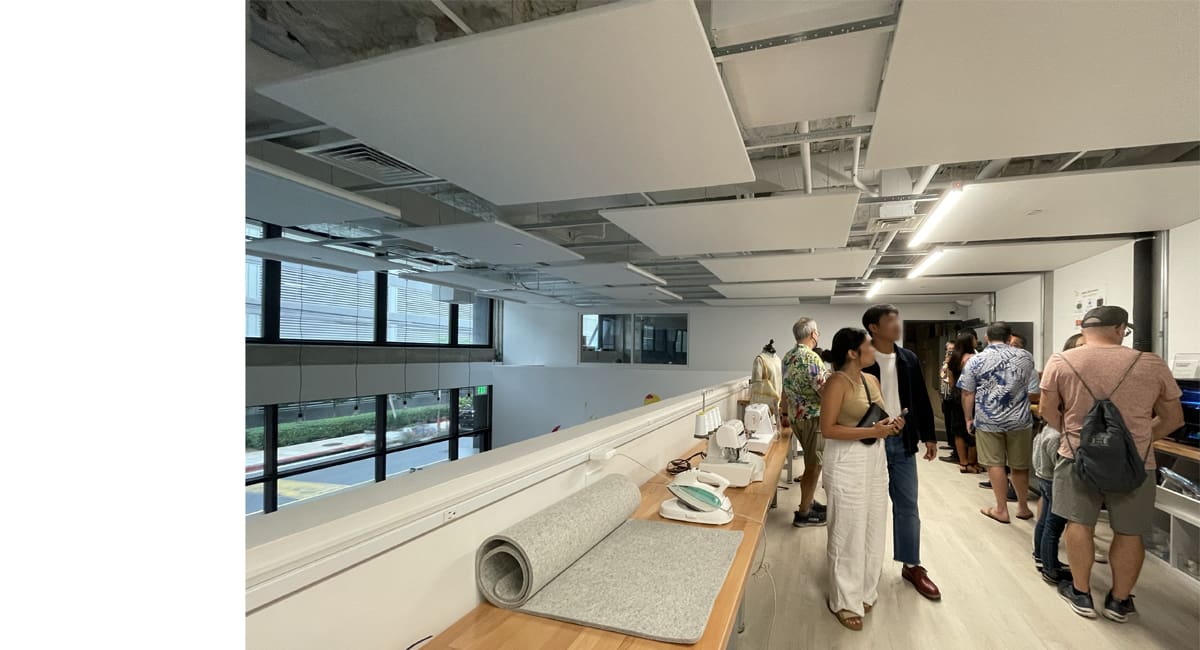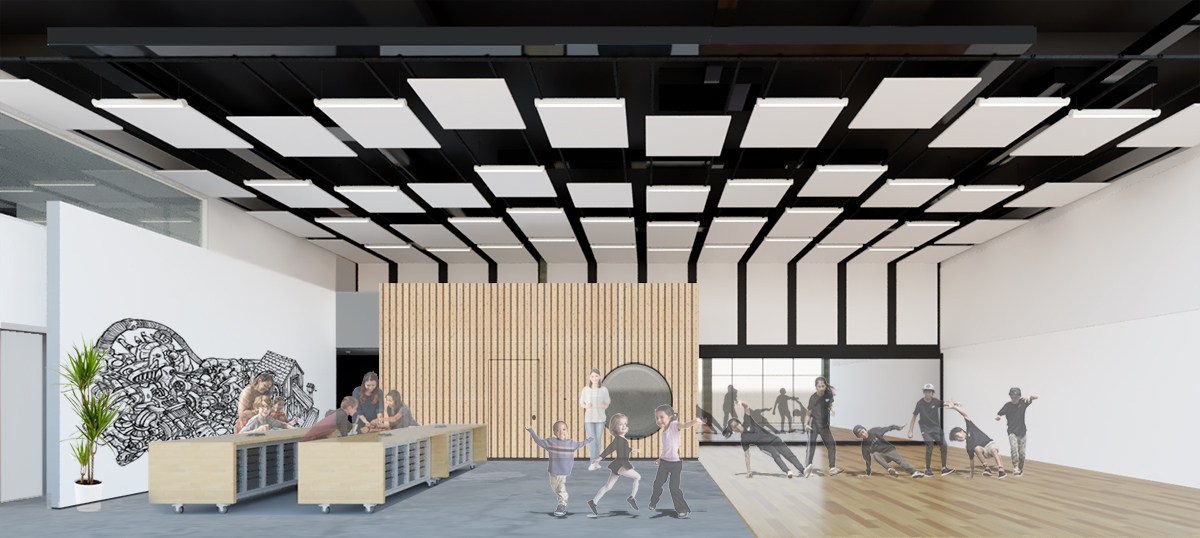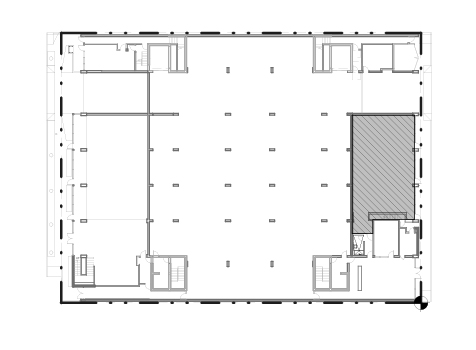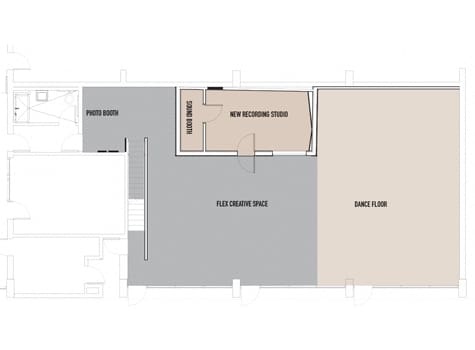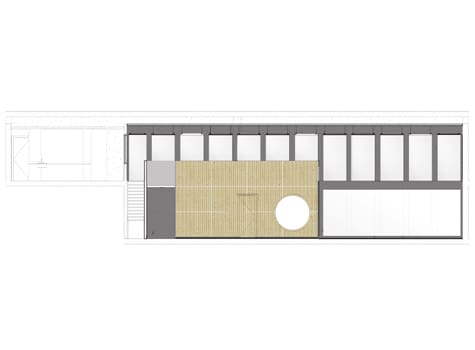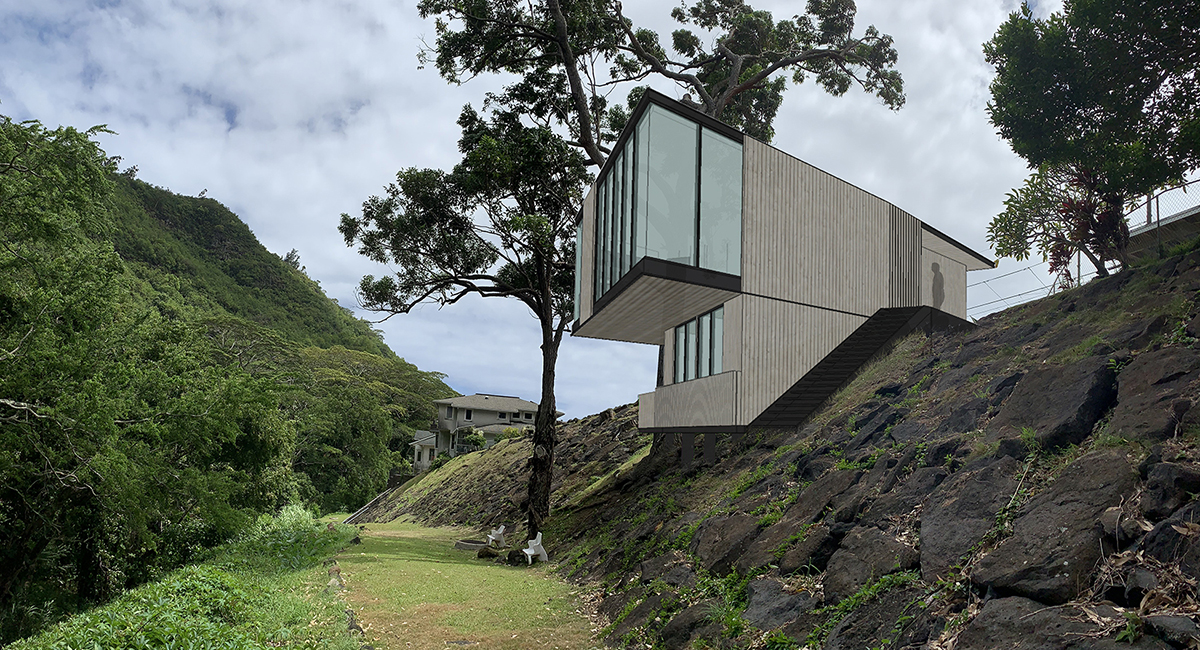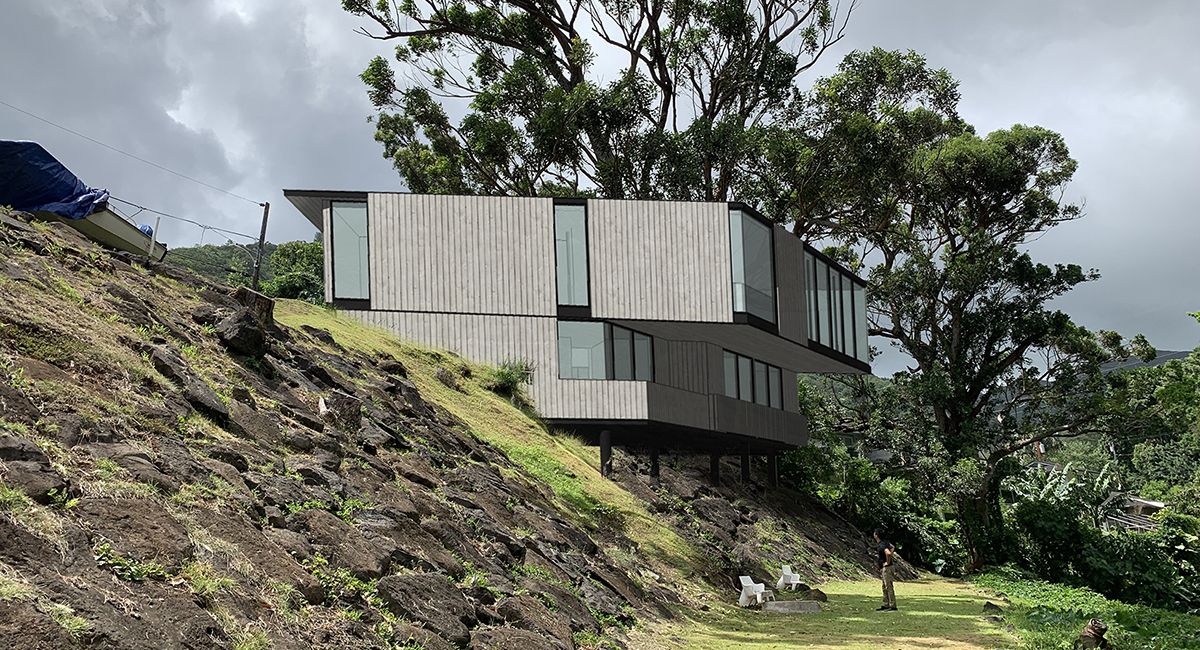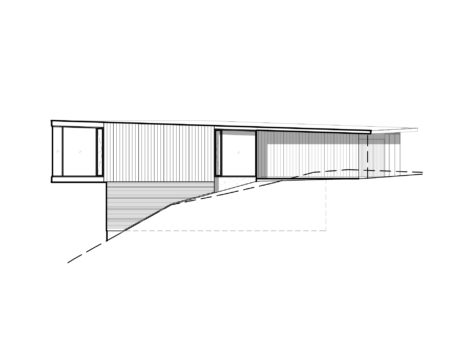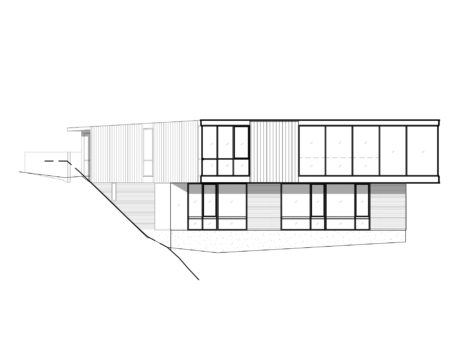Community Workshop Facility
In progress - Kalihi Valley, Oʻahu
This project was designed to be a multipurpose and multifunctional workspace and shelter for many intersecting users. This building is a community-centered resource, creating space for wood milling, woodworking, canoe building, gathering, cooking, resting, and sharing stories. The structure will be clad with invasive wood species harvested from the site through land restoration and management efforts. The wood screen creates large outdoor protected areas from the rain and interior areas stippled with diffused natural light. The roof acts as a rainwater collector with storage tanks located below the kitchen. The building and design is firmly rooted in place and community.
MA‘O Organic Farms Facility
Completed 2025 - Waiʻanae, Oʻahu
AIA Award of Excellence 2025
AIA Mayor's Choice Award 2025
AIA Community Impact Award 2025
MA‘O Organic Farms exists to perpetuate sustainable agricultural practices and empower youth through mentorship and educational programs. A new organic-certified processing facility made possible by an EDA grant will allow the farm to significantly increase agricultural production in the Waiʻanae Valley and expand food distribution to local grocers, markets, and restaurants. The structure includes a covered exterior root wash bay, automated and manual processing equipment, prep kitchen, refrigerated storage, administrative offices, and an expansive covered lanai for educational tours and observation. Large windows add natural ventilation connect to the exterior landscape and orchard. Water management is a primary goal of this project: Rain water is captured and stored; storm water is directed into bioretention swales; wash water is separated into a holding pond for irrigation; grey water and condensate are directed to grey water gardens and is naturally filtered; black water is treated on site and distributed into an absorption bed.
Ola Ka ‘Ilima ArtSpace Housing Lofts
Completed 2019 - Kakaʻako, Oʻahu
This 165,000sf mixed-use affordable housing development for artists in the heart of Kaka`ako received a warm welcome into a neighborhood largely defined by transition and full of creativity. Historically this area was home to early salt ponds, fishponds, fishing villages, a lively immigrant community, light industrial and commercial uses, and more recently has become a local arts district and housing development hub. Affordable rental units in a nine story structure with five levels of studio lofts, a double height level of townhouses with nineteen foot ceilings, and 7,000 sf of street level commercial space - home to a few local culture and arts, non-profit organizations. Affordable rental rates allow quality housing to become accessible for individuals and families earning thirty to sixty percent of the Area Median Income. The project was supported by a variety of local and state funding sources as well as housing tax credits, permitting and zoning exemptions. Units are arranged on two street frontages, creating a protected exterior courtyard for the residents with 10,000 sf of green space. Twelve rain water cisterns provide storm water catchment for more than fifty percent of the project footprint, feeding planter beds available to each resident. Andrew Neuman and Kevin Miyamura served as Project Architect and Design Principal. Architect of Record - Urban Works, Inc. Photographs by Andrew Richard Hara.
Kākoʻo ʻŌiwi Poi Mill & Rest Huts
Under Construction - Heʻeia, Oʻahu
Kākoʻo ʻŌiwi is a non-profit community organization based in Windward Oʻahu stewarding the land management, restoration and cultivation of the Heʻeia wetlands. They seek to perpetuate Native Hawaiian cultural and agricultural practices through the restoration of the wetlands and its wildlife, the propagation of native plants, food production and security. The new 4,000 sf poi mill, commercial kitchen and covered exterior education lanai is an essential element that supports their rigorous daily programming, serving as both an education space and processing facility supplying poi and fresh produce for local market. The form of the building was derived from a diagram of sustainability metrics and the local microclimate: prevailing trade winds & rain patterns, solar energy harvesting, natural ventilation and daylighting. The rhythm of the folded wood structure makes reference to and frames views of the Ko'olau mountains surrounding landscape.
Punahou School Omidyar K-1 Neighborhood
Completed 2011 - Mānoa, Oʻahu
This 40,000 sf. Kindergarten & First Grade education complex is comprised of twelve kindergarten and first grade classrooms enclosing a large central lawn. A main student dining and multipurpose hall is situated on the lower floor and faces Wilcox Hall, a 1935 historic building designed by C.W. Dickey which was restored and incorporated into the project scope as art and music classrooms. The main classroom buildings integrate covered lanai with the indoor instruction spaces themselves; computer modeling was utilized to optimize natural ventilation and daylighting. The project achieved LEED for Schools Platinum Certification in 2012 and was recognized as the largest and highest-performing green school project in the nation at its completion. Kevin Miyamura served as project lead architect, design and technical consultant, and LEED Administrator for the project through its entirety. Architect of Record - Urban Works, Inc. Photographs by Augie Salbosa.
The Mānoa Agricultural Innovation + Learning Exchange (MAILE) Project
In progress - Mānoa, Oʻahu
AIA Award of Merit 2024
The MAILE is a conceptual design for the University of Hawaii at Mānoa College of Tropical Agriculture and Human Resources (CTAHR), an outreach and research lab located on the Magoon research site at the north end of the Mānoa campus. The proposed design aims to embody the ethic of CTAHR’s mission to conserve, restore and produce agricultural resources beyond the larger Magoon site and University community, and experientially communicate the institution’s stewardship of the natural world. The elemental components of the project (roof, enclosure, base) find their analogs in the agricultural and natural world (plants, soil, sun, water.) Each element visually and experientially describes its functional stewardship of each site resource (orientation, light, water, food) to raise awareness of CTAHR and the University’s role in resource management, continuing to educate students, public, and/or the agriculture community. The AMA team worked in collaboration with Sasaki & Roth Ecological. Renderings in collaboration with Epic Inspired.
Encore Saloon Bar & Restaurant
Completed 2017 - Honolulu, Oʻahu
Utilizing the rich and storied past in the heart of the Chinatown Historic District, Encore Saloon was named after an establishment that used to occupy this building with the same name. The design ethic of the bar and restaurant is an exercise in adaptive reuse referencing the original period of the building: the structure is expressed materially as the primary interior finish of walls and ceiling; reclaimed light fixtures from a nearby industrial warehouse were retrofitted for the restaurant seating area; reclaimed fir beams, joists and roof decking were milled and repurposed for a trellis above the bar, utility closet and front bar wrap; hundreds of linear feet of an old cedar fence were refinished into an equipment screen above the kitchen block. The timeless natural material pallet was selected to create a warm atmosphere for this unique tequila & mezcal specialty bar with Mexican-inspired food.
Hoʻolaʻa Hale Kuʻikahi
Completed 2022 - Honolulu, Oʻahu
Kaluaopalena is a community garden site for the adjacent housing project and surrounding community, and requested a small outdoor structure. The Hoʻolaʻa Hale Kuʻikahi was designed was to provide shade and security on a tight budget, while maintaining covered and flexible space for various groups to use. The design utilizes distributes lateral and gravity loads onto an old existing slab to minimize new foundation work. Raised planting beds integrated into the structure will grow cultural vegetables and medicinal plants that will eventually cover the structure.
Mo’ili’ili Affordable Housing
Mo’ili’ili, Oʻahu
A Bill 7 affordable housing project designed on a consolidated urban lot with multiple setback restraints is programmed to provide 20 rental units, an open ground floor lobby, utility space, and a generous planted buffer fronting both streets of a corner lot. Five levels of light wood framing sit on a concrete podium, a construction type rarely utilized in Hawaii, but selected here as a strategy for its reduced carbon footprint, lower construction costs and compressed schedule. The massing is designed to visually minimize the scale of the building and engage with the mid-rise urban neighborhood.
Urban Student Housing
In Progress – Waiʻalae, Oʻahu
This Bill 7 affordable housing project is proposed to be nestled in the university neighborhood on a uniquely shaped urban lot. The building footprint is a site plan extrusion, less the required yard setbacks and provides 25 units designed for student living. The five story light wood framing over a 1 story concrete podium will help meet the tight budget constraints and sustainable directives. Through the challenge of finding structural logic and of a steep rear yard fronting a flood zone, the project synthesizes various efficiencies and creates student living in close proximity to public transit and walking distance to the university.
Mucho Aloha Brewery & Restaurant
Completed 2024 - Kōloa, Kauaʻi
This microbrewery interior retrofit and lanai addition draw from the architectural language of the previous and surrounding structures. A major challenge with this site was designing the wastewater treatment system that is unique to brewery effluent. The design encompasses the adaptive reuse of an historic structure and repurposes an existing sewer tank into a holding tank and pump station, with over 500 feet of below grade coring to extend the force main to another existing waste water treatment plant on owner’s adjacent property. The significant effort and multi-agency approvals was worth the work to create a new home for this local brewery and restaurant.
Parker School
In progress - Waimea, Hawaii Island
The proposed 27,000 sf Campus Center provides dedicated, flexible spaces for athletics and covered gathering spaces for special events. The building form is sensitive to the heritage of the campus and offers indoor-outdoor connected commons spaces that create new options for learning, meeting, and reflection. Designed to balance strong prevailing winds with naturally ventilated spaces, the building opens to the surrounding fields and landscape. The design adapts Parker School colors and roof forms and the new building helps to connect the variety of the campus’s existing styles and color palates. Moments of informal interactions make Parker School’s Campus one that is conducive towards a setting that weaves together the various program sites on campus. Andrew Neuman served as design lead on the project. Architect of Record - Urban Works, Inc.
Vivistop Honolulu, Vivita USA
Completed 2022 - Kakaʻako, Oʻahu
Vivistop is a non-profit engaged in the community through arts education and mentorships for local kids. As Vivistop’s first location in the US this facility is a much-needed creative center in the neighborhood hosting a maker-space, recording studio, film corner, dance studio, kitchen and flexible workspace. A soundproof recording studio is tucked inside a box featured prominently in the space, inspired by early 80's boomboxes with a small mezzanine and viewing platform above. The artist duo Wooden Wave collaborated with Vivistop to paint out the box. The acoustic ceiling and wall panel array offer sound diffusion, surface absorption and reflection for the multiple uses in the space.
Ipulei Residence
In progress - Pālolo Valley, Oʻahu
A single family residence in Palolo Valley combines the owner’s expectations for a minimal and modern family home with the realities of a challenging site. The design resolution takes advantage of the steep slope and irregular lot as an opportunity for inspiration, creating a dynamic roof and large aperture facing the backdrop of Pukele Stream and the verdant east valley wall. The site plan layout, resulting massing, and building envelope are a direct result of transitional height setbacks and easement constraints of the site. The concrete foundation and lower level bedrooms sit deep into the hillside while steel framing supports the living spaces that float nimbly above the ravine.



